STAINLESS STEEL DECARBONIZATION
The market has softened significantly since last year
We visit Ovako’s Hofors plant in Sweden
MACHINE LEARNING
Estimating copper content in raw materials made simple
ROLLING
Innovative radar technology for rolling mills

www.steeltimesint.com September 2023 - Vol.47 No6
GLOBAL STEEL DYNAMICS FORUM – FULL REPORT
Since 1866
ORANGE IS THE NEW GREEN.
REDEFINING SUSTAINABLE METALS PRODUCTION
As the metals industry transforms in pursuit of green steel, the future of sustainability demands pioneers and leaders with vision, courage, and a willingness to push the boundaries of innovation and eco-friendly metals production. Primetals Technologies is redefining sustainable metals production.
We’re making orange the new green.

LEARN MORE AT METEC 2023
primetals.com
EDITORIAL
Editor Matthew Moggridge
Tel: +44 (0) 1737 855151
matthewmoggridge@quartzltd.com

Assistant Editor Catherine Hill
Tel:+44 (0) 1737855021

Consultant Editor
Dr. Tim Smith PhD, CEng, MIM
Production Editor
Annie Baker
Advertisement Production
Martin Lawrence
SALES
International Sales Manager
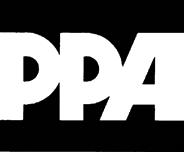



Paul Rossage paulrossage@quartzltd.com
Tel: +44 (0) 1737 855116
Sales Director
Ken Clark kenclark@quartzltd.com
Tel: +44 (0) 1737 855117

Managing Director
Tony Crinion tonycrinion@quartzltd.com
Tel: +44 (0) 1737 855164
Chief Executive Officer
Steve Diprose
SUBSCRIPTION
Jack Homewood Tel +44 (0) 1737 855028
Fax +44 (0) 1737 855034
Email subscriptions@quartzltd.com Steel






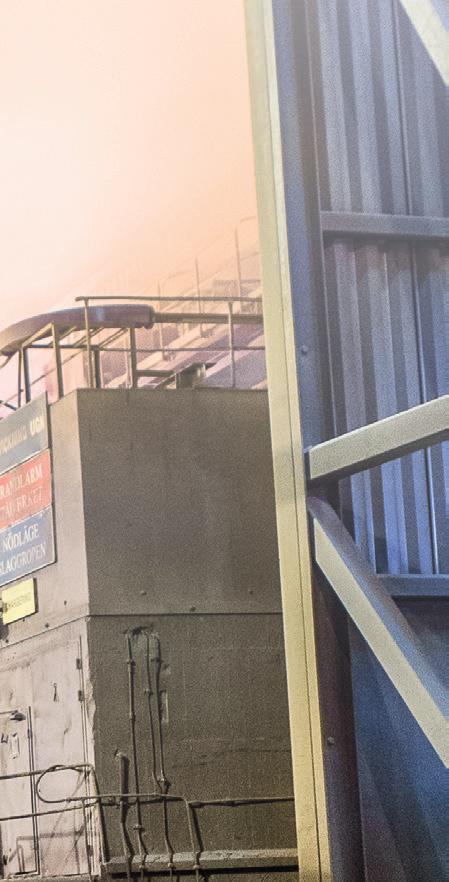

www.steeltimesint.com
Times International is published eight times a year and is available on subscription. Annual subscription: UK £215.00 Other countries: £284.00 2 years subscription: UK £387.00 Other countries: £510.00 3 years subscription: UK £431.00 Other countries: £595.00 Single copy (inc postage): £47.00 Email: steel@quartzltd.com Published by: Quartz Business Media Ltd, Quartz House, 20 Clarendon Road, Redhill, Surrey, RH1 1QX, England. Tel: +44 (0)1737 855000 Fax: +44 (0)1737 855034 www.steeltimesint.com Steel Times International (USPS No: 020-958) is published monthly except Feb, May, July, Dec by Quartz Business Media Ltd and distributed in the US by DSW, 75 Aberdeen Road, Emigsville, PA 17318-0437. Periodicals postage paid at Emigsville, PA. POSTMASTER send address changes to Steel Times International c/o PO Box 437, Emigsville, PA 17318-0437. Printed in England by: Stephens and George Ltd • Goat Mill Road • Dowlais • Merthyr Tydfil • CF48 3TD. Tel: +44 (0)1685 352063 Web: www.stephensandgeorge.co.uk ©Quartz Business Media Ltd 2023 ISSN0143-7798 Cover courtesy of Taylor-Winfield CONTENTS – SEPTEMBER 1 September 2023 26 31 Rolling Radar technology for rolling mills. 34 Stainless steel Disappointing... 38 Machine Learning Calculating the lowest cost composition. 41 Decarbonization Solutions at every step. 44 Perspectives Flying above the radar 47 History Cort and the black metallurgists, Pt. 1. 2 Leader By Matthew Moggridge. 4 News round-up The latest global steel news. 6 Innovations The latest products and contracts. 9 Latin America update All change at Usiminas. 13 India update Secondary by name... 16 Global Steel Dynamics Forum Decarbonization under sharp focus. 26 Decarbonization Ovako – Sweden’s largest producer of green hydrogen
Join us in Vienna for the Future Steel Forum 2023...






























The Future Steel Forum 2023 will take place in Vienna, Austria, on 20-21 September at the Hilton Vienna Garden Hotel and I am pleased to say that this will be the event’s sixth outing.

While the inaugural event took place on the 14-15th of June 2017 – which is seven years ago – there was, of course, a pandemic lockdown in 2020 and that’s why the event in Vienna is the sixth and not the seventh outing for this very popular conference tackling the important subject of digital manufacturing for steelmakers.
This year’s event in Vienna marks the first time we have brought the Forum to a western European capital. We started with two Forums (in 2017 and 2018) in the Polish capital of Warsaw. In 2019 we moved to Budapest in Hungary and then after a year’s break due to the pandemic we regrouped in 2022 in Prague having organised a virtual get-together in 2021.
Matthew Moggridge Editor

matthewmoggridge@quartzltd.com

On a personal level, I am glad to say that an event I developed and then launched seven years ago has stood the test of time and is now a calendar event for steel professionals around the world.
My aim with the Forum has always been to invite experts in the field of digital
manufacturing to speak to the steel industry. It was also of great importance to me that global steelmakers were invited to speak. Over the years, I have been successful in attracting big names. Last year, Mark Bula, chief commercial officer of H2 Green Steel agreed to present the opening keynote. This year is no exception to the rule. In addition to specialists in the field of artificial intelligence, leading plant builders and trade associations, the 2023 event will open with a keynote presentation from Austrian steel giant voestalpine. Dr. Michael Eder, chief technology officer of the company’s High Performance Metals (HPM) Division and Philipp Horner, chief sustainability officer, will open the conference with an overview of the division’s sustainability strategy and its digital transformation.
Delegates will hear from South Korean steel giant POSCO, Japanese steelmaker JFE Steel, the Spanish CELSA Group, the Latin American steel manufacturer Ternium and Tata Steel India; and let’s not forget what promises to be an exciting decarbonization debate featuring Caroline Ashley, director of Steelwatch. To register, visit www.futuresteelforum.com – today!
PROFILEMASTER® SPS Profile Measuring System





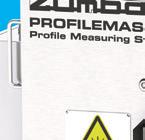



The PROFILEMASTER® SPS is a light section measuring device for measuring contours and dimensions on profiles of all kinds in cold and hot steel applications.
Benefits:
Maximum measuring accuracy thanks to temperaturestabilized measuring systems






















Shape fault detection (SFD) thanks to high sampling rate


High-precision measurements
Detects process problems at an early stage


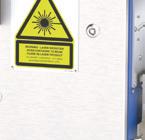




Fast maintenance and easy cleaning

2 LEADER
Zumbach Electronic AG | Hauptstrasse 93 | 2552 Orpund | Schweiz Telefon: +41 (0)32 356 04 00 | sales@zumbach.ch | www.zumbach.com
4 - 8 Number of cameras min 5 Min. object diameter (mm) max 720 Max. object diameter (mm)
Q3-DYMS DANIELI YARD MANAGEMENT SYSTEM

Automatic Yard means no human on the floor, nor on the cranes. Q3-DYMS represents a breakthrough technology to automate semifinished and finished product logistic operations, simplifying the complex management of a yard during production in fully automatic mode. Its features make it part of a plant digitalization strategy.

Via Bonaldo Stringher, 4 33042 Buttrio (UD) Italy Phone +39 0432 518 111 www.digi-met.com www.dca.it Follow us on Linkedin
Indiana-based Steel Dynamics Inc. (SDI) has signed a renewable product purchase agreement with Nextera Energy Resources, for 308 MW of energy to be produced by a new wind farm project in Scurry County, Texas. Once operational, the new wind farm is expected to produce approximately 1.1 million MWh of electricity annually, equivalent to 16% of the company's steel mills' electricity usage in 2022. This also will contribute to SDI’s long-term reduction of Scope 2 greenhouse gas emissions intensity, the company has stated.



Source: Recycling Today,


3 August 2023
Liberty Steel is idling the only operational blast furnace at its recently acquired Dunaferr site in Hungary, as well as the steel plant. The steelmaker said the reason for the closure was due to the cost of production being unviable, given low finished steel prices. Liberty only won the bidding process for the stricken mill in mid-July, buying it out of liquidation for €55m. In the last stage of the bidding process, it was competing with Vulcan Steel. Ukraine's Metinvest, which was eliminated from bidding in an earlier round, said the value of the plant was close to €200million.
Source: Argus Media, 8 August 2023
Netherlands-based tech company Villari has announced a significant seed investment of €2.5 million aiming to propel its sensor technology, designed to detect and monitor small fractures or ‘fatigue cracks’ in steel structures. Led by FORWARD.one, along with coinvestors InnovationQuarter Capital and Delft Enterprises, the €2.5 million investment will fuel Villari’s international expansion efforts. CEO Olivier Baas and COO Floris Achterberg plan to expand their team with engineers and sales talents to accelerate the scaling process.
Source: EU-Startups, 8 August 2023
A plan by Jindal Steel & Power Ltd. to develop an iron-ore mine that will cost around $2 billion in South Africa is facing opposition from communities who say the operation would require thousands of homes and graves to be relocated. “Our community of Makhasaneni has been fighting Indian giant mining company, Jindal Mine, who for years ha[s] been intruding with plans to dig up iron ore in the lush hills that we have called home for generations,” community members said in a petition signed by more than 6,700 people.
Source: Zawya, 8 August 2023

ArcelorMittal Nippon Steel India (AM/NS India) delivered relief materials to villages in Kujang block, Jagatsinghpur, following severe flooding beginning in August, which, according to reports, has badly affected the citizens, cattle, and property. Under its corporate social responsibility agreements, AM/NS India handed over the relief material to Soumyashree Panigrahi, the local development officer. The resources included biscuits, baby food, and sanitary napkins to meet the immediate needs of the people. Additionally, the company also provided cattle feed to mitigate the shortage of food supplies to the animals. Source: OrissaDiary.com, 11 August 2023
Streaming service Netflix has announced the upcoming production of a new drama about a landmark toxic waste case in the UK. It took 15 years to demolish Corby's former steelworks and remove waste from the land after British Steel announced plans to stop operations in 1979. Council contractors employed to clean up sites were said to have had little expertise in dealing with toxic waste. Eighteen families claimed their 19 children, who were all born over the same 15-year period with upper limb defects, were affected by the removal operation, with many of them later reaching out-of-court settlements following Corby Borough Council’s admittance of negligence. Source: BBC, 11 August 2023

4 NEWS ROUND-UP
US Steel has announced a collaboration with Google Cloud that aims to leverage Google Cloud’s generative AI technology to enhance operations at the largest iron ore mine in North America. The first application to emerge from the partnership is named MineMind; a programme driven by GenAI that is designed to streamline equipment maintenance processes. By utilizing Google Cloud’s AI technologies such as Document AI and Vertex AI, MineMind seeks to improve the efficiency of the maintenance team’s operations.

Source: ERP Today, 11 August 2023

Thieves have stolen copper piping and stainless-steel worth thousands of pounds from a building site in Nottinghamshire, UK. Police said the materials were taken from the site at the Loughborough Road and Bridgford Road junction in West Bridgford. It happened after workmen packed up on 7 August –either during the evening or early on 8 August. Officers have launched an appeal following the burglary. Nottinghamshire Police said the offenders ‘may have looked like builders’ but added ‘there shouldn't have been anyone on site during this period’.
Source: BBC, 13 August 2023
Over 1,400 people who live around the Tata Steel factory in IJmuiden have joined a mass claim against the steel factory, citing health issues caused by dust, noise, poor air quality, and odours relating to the factory. According to local media reports, scientific research has established that people in the area are more likely to suffer
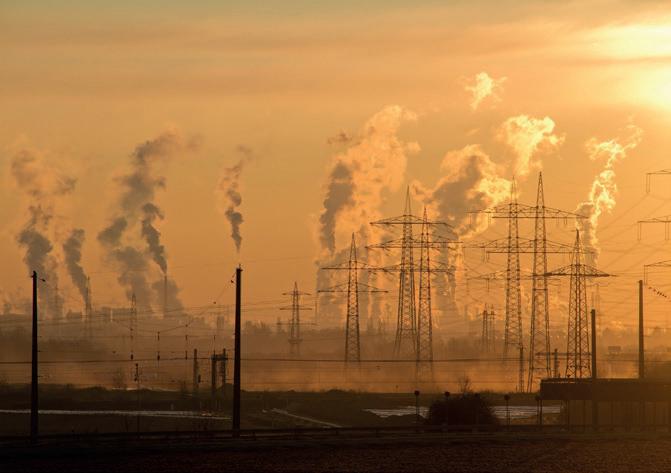
Singapore’s Meranti Steel announced that it will start a new green steel project in Thailand, in co-operation with Danieli, an Italy-based equipment supplier, for the development of a direct reduced iron (DRI)-based plant, which will produce green steel with the use of renewable energy solutions including solar and wind energy, and hydrogen. The new plant will feature an Energiron direct reduction plant with technology developed by Tenova and Danieli that is ready for a transition to 90% hydrogen, a Danieli Digimelter melting unit featuring a Q-One power feeder that can process green energy, and a Danieli QSPDUE thin-slab casting and rolling line. Source: Yieh Corp, 16 August 2023
Three miners have died in a fire at an ArcelorMittal coal mine in Kazakhstan, the company announced on 18 August. Efforts to contain the fire, which broke out on 17 August, and to restore normal ventilation followed, ArcelorMittal Temirtau, which represents the firm in Kazakhstan, said in a statement. ArcelorMittal Temirtau owns 15 coal and ore mines in Kazakhstan.
Source: Reuters,18 August 2023
from health problems like headaches and nausea than elsewhere in the Netherlands. Serious conditions, such as heart disease, diabetes and lung cancer, are also more common. Source: NL Times, 24 August 2023

Tata Steel’s CSR department organized a visit to the Tata Steel Zoological Park for 38 underprivileged children and their parents on World Humanitarian Day. According to the steelmaker, the children had the opportunity to explore the zoo and museum, gaining insights into various animal species, their habitats, and wildlife conservation. “TSLP’s management believes in adopting a holistic approach to education and learning for the targeted students from marginalized backgrounds’’, a departmental official stated.

Source: The Avenue Mail, 20 August 2023
The Indian arm of industrial gas giant Linde has won an order to install a 1,000 tonnes per day cryogenic oxygen plant at Rourkela steel plant, located in Odisha, India. The company signed a letter of acceptance with the Steel Authority of India (SAIL), with the agreement also including the provision of renewable gas following the construction and operation of the plant. Equipped with a production capacity of 4.5Mt/yr of hot metal, 4.2Mt/yr of crude steel and 3.9Mt/yr of saleable steel, the Rourkela steel plant was founded in 1955 and is India’s first fully integrated steel plant.

Source: Gasworld, 29 August 2023

5 NEWS ROUND-UP
New pump solution from RMI
When a steel rolling mill in Italy was looking to enhance the quality of its product while improving overall efficiency, it turned to a partnership of metallurgical plant solutions company Primetals Technologies and high-pressure pump specialist RMI Pressure Systems.


The mill decided to invest in new descaling equipment – with a view to raising quality standards while lowering overall energy and water costs. According to Kathryn Poke, RMI’s general manager for Europe, the Middle East and Africa, the company designed a bespoke solution based on its established Trimax Series of reciprocating plunger pumps.
“Engineered to order like all our solutions, we designed the system to suit the project requirements,” said Poke. “With the Trimax pump at its heart, the specialised system for the mill included controls, nozzles and headers to ensure reliable and efficient operation.”
RMI was required to provide a pump which could deliver hydraulic power at multiple pressures, using a variable speed drive and engineered nozzles. The result was a system capable of producing flow rates from 50 up to 670 litres per minute, at pressures up to 1,000 bar.
“The technical design of descaling equipment is an exact science,” she explained. “This requires precision nozzle design and high hydraulic pressures calculated to deliver the best descaling results for a variety of steel variants, at minimum cost and maximum efficiency.”
The variable speed drive and engineered nozzles ensured that the system delivered controlled hydraulic pressure and precision impact, while consuming less energy and water. The lower installation and maintenance costs resulted in a payback period of less than two years.
“Customers are increasingly looking for solutions and not just products,” said Joe Keenan,
Thermo Fisher Scientific adds to spectrometer range
Thermo Fisher Scientific has announced the latest iteration to its range of ARL iSpark Series Optical Emission Spectrometers. The Thermo Scientific™ ARL iSpark™ 8860 Inclusion Analyzer with Spark-DAT boasts all the features necessary for both thorough elemental analysis of steel and ultra-fast inclusion analysis, says the company. According to Thermo Fisher Scientific, it can help to guarantee keeping the lowest inclusion content of steel products at the point of manufacture to prevent costly production issues, like nozzle clogging during continuous casting processes.

The ARL iSpark 8860 Inclusion Analyzer is the first optical emission spectrometer on the market to combine full elemental coverage with rapid characterization of non-metallic inclusions in a single analysis. It can identify and determine fea-
tures such as the type, number, size, concentration and volume fraction of inclusions, allowing steel manufacturers to control inclusion content in steel products in real time. In turn, says Thermo Fisher Scientific, it can help to prevent costly process issues and the detrimental effects of inclusions on the mechanical properties of end products, ensuring high quality steel production and minimizing the risk of customer claims or product returns.
Features include:
• Ability to generate advanced elemental concentrations and inclusion data in steel
• 1m vacuum Paschen-Runge optics with photomultiplier tube (PMT) detectors
• Full elemental coverage, including gas ele-
RMI managing director. “This contract illustrates how RMI’s custom-design capability allows us to build fit-for-purpose solutions with our pumps as a central component.”
Keenan noted that the trend is toward OEMs gaining more specialised knowledge about how pumps are applied in specific applications, so that they can augment their offerings with other componentry, accessories and technology. This allows the customer to source more of their operational equipment from a single supplier, reducing the risk and resources associated with integrating and maintaining these different elements in-house.
For further information, log on to www.rmipsl.com
ments
• Fast inclusion analysis
• Comprehensive inclusion analysis software tools, including Spark Explorer, Inclusions Report and Statistical Process Control (SPC)
• Inclusion analysis method customization and training with Thermo Fisher Scientific experts
• Automated with the ARL Sample Manipulation System (SMS).
For further information, log on to www.thermofisher.com/order/catalog/ product/IQLAAHGABDFAOOMBOD
Pomini Tenova roll grinders for Hoa Phat Group
Tenova, a global company specialized in sustainable solutions for the green transition of the metals industry, has been awarded a new contract by Hoa Phat Group, a leading industrial manufacturing group in Vietnam. The contract is for new roll grinders supplied by Pomini Tenova, a Tenova brand that specializes in roll shop equipment, with the roll grinders to be utilized in Hoa Phat’s new hot rolling mill in Dung Quat, Quang Ngai province.
The scope of work for the roll shop includes the full set of roll grinders for grinding work rolls and back-up roll, with and without being
mounted on chocks. All machines are equipped with Pomini HMI (Human Machine Interface), the Pomini Inspektor3 with Eddy Current and Ultrasound probes for roll inspection. The digital package with Tenova Edge technology and Tenova adVisor will provide remote constant condition monitoring for each machine as well as operational and maintenance support.
For further information, log on to www.tenova.com
www.steeltimesint.com INNOVATIONS 6
Fives to supply hydrogen burner project
Fives, an international engineering group, has partnered with leading European companies and research institutions to collaborate on the development and testing of hybrid burners with hydrogen content in industrial reheating furnaces. The TWINGHY project was launched in the CELSA Barcelona plant in Spain and aims to demonstrate an optimized heat transfer process based on hybrid burners in reheating furnaces. According to Fives, it will allow the steelmaker to progressively decarbonize the reheating process through an increase of hydrogen in combination with oxygen by monitoring and controlling it through a digital twin.
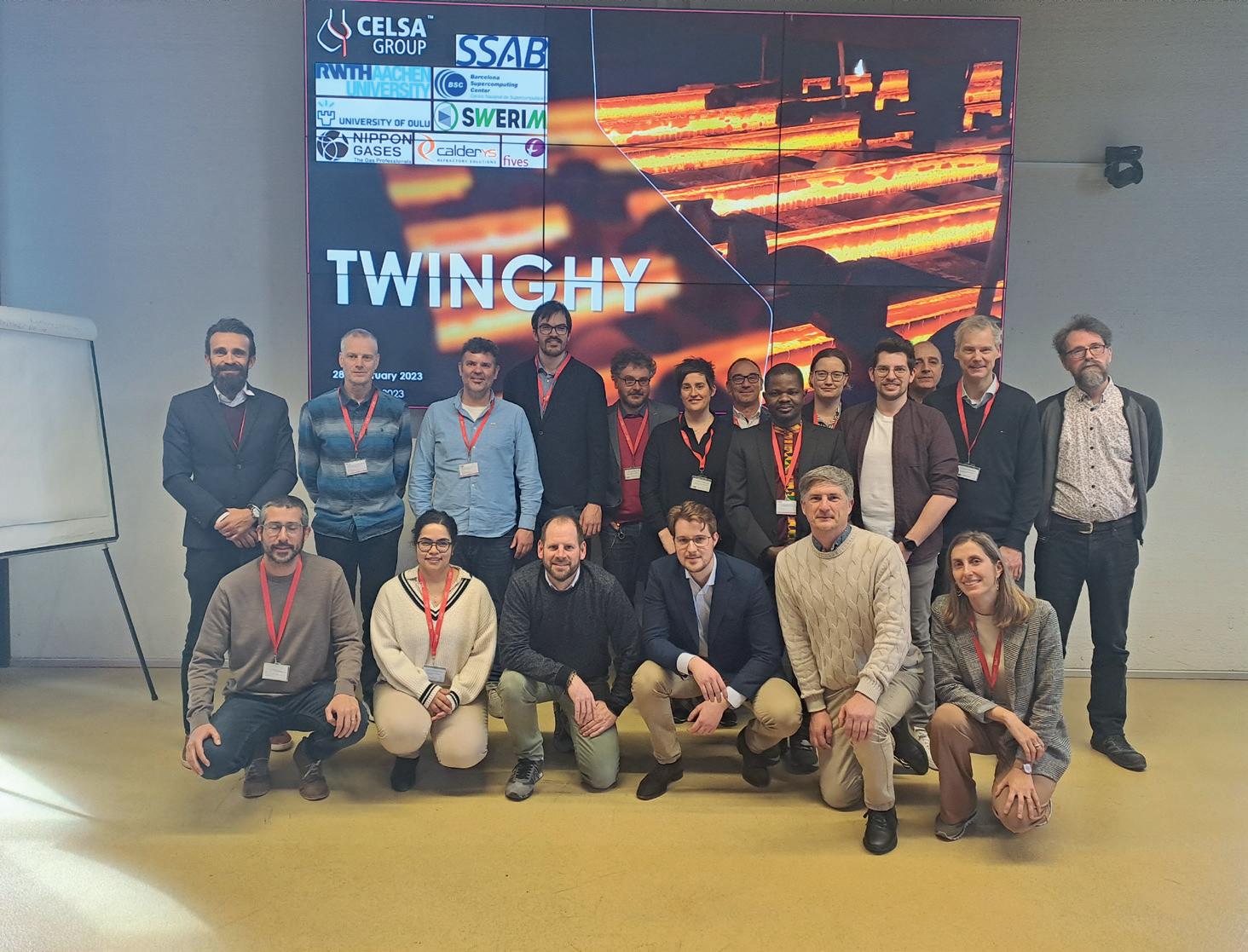
With the ultimate goal of reducing emissions and increasing energy efficiency within the steel industry, this project involves testing and optimizing hybrid burners in real-world settings, developing new control systems and monitoring techniques to ensure a safe, efficient operation.

Testing will take place on the existing Stein Digit@l Furnace®, installed by Fives at CELSA’s Barcelona plant in 2009. This is a walking beam furnace of 180 tons/hr capacity designated for the production of different merchant bars in the construction industry.
Two types of hybrid burners (natural gas-hy-




drogen) will be developed and tested: one based on air-combustion and the other on oxy-combustion. Fives will be providing its thermal reheating expertise to test the hybrid burners by using hydrogen as a partial replacement for natural gas.
To support hydrogen transition, a digital twin methodology will be developed by partners and applied to the demonstrator as well as the replication site. The digital twin will analyse the impact of different fuel blends, energy efficiency, reliability and safety.
In addition, new challenges related to hydrogen usage, such as security of supply, optimal fuel blends and quantities, CAPEX, OPEX, impact on process, required infrastructure and safety regulations, will be also addressed during the anticipated 54-month project life.
The TWINGHY project will bring together combustion system optimization and furnace digitalization, ultimately avoiding the need to replace an entire furnace with a long lifespan ahead and accelerating the decarbonization of the steel industry, says Fives. For

Welding system from AMADA
AMADA WELD TECH has launched its Jupiter Laser Welding System, a semi-automatic production system for welding battery modules for use in electric vehicles, power tools, energy storage and military battery module applications. The Jupiter is ideal for battery modules measuring up to 300 x 300 x 300 mm, says the company.

The Jupiter system can be equipped with several lasers and a laser weld head with fixed optics or a galvo (scanner). The Jupiter Laser Welding System features a Class 1 laser welding enclosure for battery tab welding, which is safe to operate in a regular production environment. An integrated combustion suppression unit (CSU) safeguards both the system and the operator, while integrated fume extraction keeps the enclosure safe from
contamination.The Jupiter comes with a 500W power fibre laser in the near infra-red (NIR) wavelength range. A manually operated front door provides manual loading, while an automatically operated side door may be used for robotic/ in-line loading. The down-holder provides joint quality and traceability via part-to-part contact.
For further information, log on to https://www.amadaweldtech.eu/
September 2023 www.steeltimesint.com
+1.914.968.8400 www.GRAPHALLOY.com Yonkers, NY USA Handle High Temperatures and Harsh Operating Conditions with Ease. • Survives when others fail
Run hot, cold, wet or dry • Corrosion resistant • Self-lubricating • Low maintenance • -400˚F to 1000˚F (-240˚C to 535˚C) • Ovens, furnaces, conveyors, mixers, dampers GRAPHALLOY® Bearings... We Go to Extremes HeatAd_60mmx270mm.qxp_Layout 1 11/9/20 11:55 A
further information, log on to www.fives.com
•
· Honours existing mill attachment points and guide base, no machining on your stands required

· Made from stainless steel and speci cally tailored to your mill ensuring perfect t, operation and longevity
· Single point, centralized adjustment during operation
· 2, 3 and 4 roller con gurations
· Rigid, stainless steel construction
· Broad size range
· Fewer surface defects and better scale control
· Available in Box, Trough and Restbar-mounted con gurations
info@fabris.com www.fabris.com 905.643.4111 Contact Us ® spiral cooling system ® Our roller entry guides keep your product on the pass Maximize your mill speed while meeting your quenching requirements on all bar sizes. Not just controlled cooling, but correct cooling Traversing Restbars allow for quick and accurate pass changes
box con guration
trough con guration
With over 50 years in the Steel Industry, we have a wide variety of solutions to keep your mill rolling.
All change at Usiminas
In March 2023, Usiminas announced that controlling shareholders Nippon Steel and Ternium had agreed on a new governance structure, which would consolidate control of the company in the hands of Ternium.
By Germano Mendes
THE new Usiminas agreement entails several changes to the previous structure of the business. T/T group (including Ternium, Tenaris and their affiliates, all of them subsidiaries of Techint group) agreed to purchase 69 million shares from Nippon group (comprising Nippon Steel, Mitsubishi and MetalOne) at R$10 (or US$2.06) per voting share. This implied a ~35% premium over the previous day’s closing price.
After the deal is concluded, T/T group would own 61.3% of the controlling group’s shares, while the Nippon group would hold 31.7% and Previdência Usiminas (pension fund for company employees) remains with 7.1%. In terms of Usiminas’ total voting shares, T/T group would retain 49.3% and Nippon group, 22.7%. Fig 1 shows the new ownership structure, stressing that the controlling group retain 68.6% of the voting capital. Ternium would purchase 57.7 million shares for around $111 million in cash, while Tenaris would acquire the remaining shares.
A revised shareholder agreement would be implemented, in which: a) T/T group would nominate a majority of Usiminas’ Board of Directors; b) Nippon group would designate the chairman of the board; c) T/T group would nominate the CEO and four other executives; d) Nippon group would designate the VP of technology & quality; e) any decision by the controlling group would require support of 55%
of the votes, which means that the T/T group would have a final say on ordinary decisions given that its stake would jump to 61.3% of the controlling group; f) under the new agreement, two years after the deal is closed, T/T group will have the right to buy Nippon group’s remaining shares (153 million voting shares) at the higher price of US$2.06 per share and the 40-trading day average price immediately prior to the date of exercising the option. In addition, Nippon group will have the right to withdraw its remaining shares from the control group and sell them in the open market after giving T/T group the opportunity to buy them at the 40-trading day average price immediately prior to the notice of withdrawal, as well as the right, at any time after the second anniversary of the closing, to sell such shares to the T/T group at US$2.06 per share.
The initial capital market’s reaction Generally speaking, the financial analysts understood that the transaction was positive both for Usiminas and Ternium. For instance, according to JPM: “The past history of governance at Usiminas was marked by a number of disagreements between shareholders which culminated in a structured form of shared control. T/T taking control of Usiminas allows the Techint group, a great operator, to effectively run the company, potentially
turning the business around and bringing additional value to all shareholders (including Ternium itself).”
A similar conclusion was provided by BTG Pactual Bank: “In our view, this is shapingout to be a win-win move for the two. For Usiminas, it’s clear that the company has been struggling with its operations over the last few years (several operational setbacks in a five-year range). We argue that historical shareholder disputes and the lack of a solid/clear controlling entity could be one of the reasons for the underperformance. So having Ternium, (one of the best steel operators in the world, a LatAm player) as its main reference shareholder should be seen as positive for the company”.

BTG Pactual Bank also remembered the trajectory of Ternium’s investment in Usiminas: “Late 2011, Ternium entered the control block of Usiminas by acquiring Votorantim/Camargo Correa’s stake for R$4.1bn. At the time, Ternium paid R$36 per share for Usiminas, which proved to be an excessive price tag for the move over the past years. It’s important to remember that at the time there was a bidding for the asset between Ternium and CSN, which inflated the price tag of the transaction materially”. Bank of America stressed that this deal had a ~84% premium to the stock price at the day prior to the acquisition.
Ternium has a very comfortable situation,
* Professor in Economics, Federal University of Uberlândia, Brazil. E-mail: germano@ufu.br
9 www.steeltimesint.com September 2023
de Paula*
LATIN AMERICA UPDATE
as it reported a $2.6bn net cash position as of Q4 22. The total cash disbursement for purchasing additional shares of Usiminas, therefore, would be immaterial for the company, as $111 million represents only 4% of its net cash position and 1% of its market capitalisation. Thus, it is a relatively small amount of money when the benefits of a higher integration between Usiminas and other Ternium assets in the region is taken into consideration. Moreover, Ternium will fully consolidate Usiminas’ balance sheet and results of operations in its financial statements at the beginning of July 2023.

New management team and perspectives
The purchase of additional shares by Ternium was approved by the Brazilian antitrust watchdog CADE in June 2023 and the deal concluded in early July 2023.
Immediately, a new managerial team was designated. The most important changes were: Alberto Akikazu Ono moved from CEO to chairman, whereas Marcelo Chara, CEO of Ternium Brasil, became CEO of Usiminas.
As can be observed in Fig 2, after interrupting the blast furnaces and steel shop at Cubatão steel mill, Usiminas has been obliged to purchase a considerable volume of slabs. The amount was around 1.3Mt/yr during the period 2018-2020 and 2.1Mt/yr between 2021 and 2022. Annualised figures for 2023 show a similar rhythm this year. Ternium Brasil, for its part, is a 5Mt/yr coke integrated mill dedicated only to slabs. There is already a good complementarity between Usiminas and Ternium Brasil.
Fig 2 demonstrates that Usiminas’ crude steel production was, on average, 3Mt/ yr along the period 2018-2022. The sharp

decline in 2023 is a consequence of the revamping of its largest blast furnace, at a cost of $540M. Its maintenance stoppage faced some delays, as it is now expected to end by September (from August, previously). Additionally, Usiminas estimates the ramp-up will take a few weeks, which will likely help profitability only by 2024. Management expects that production rates at blast furnace #3 – which were close to 60%-70% of capacity utilisation before the maintenance stoppage – will return to close to its 3Mt/yr nominal capacity after the work is completed. This could lead to a higher dilution of fixed costs, while the renovated furnace is expected to be highly efficient and require less maintenance.
Currently, Usiminas is modernising its steel shop # 2 at its Ipatinga steelworks. The company is still pondering the revamping of blast furnaces #1 and #2 (which is idle) at the same site. It is understood that the company’s Cubatão mill will continue to operate solely as a re-roller, producing HRC and CRC, by processing slab from third parties.
Usiminas released financial performance figures for Q2 2023 in late July. Mr Chara, the new CEO, said that his primary commitment is to improve overall business competitiveness and help the transition to a more sustainable company. Chara noted that the use of natural gas (replacing coal) could be an alternative for Usiminas in the near future as it seeks to be a more ESG-friendly business. Obviously, it is too soon to expect significant change in Usiminas’ strategies, but definitely moving from a joint-venture model to one large owner tends to enable considerable transformations in the term. �
www.steeltimesint.com September 2023 LATIN AMERICA UPDATE 10
Fig 1. Usiminas’ ownership structure (%)
Fig 2. Usiminas’ crude steel and rolled steel production and slab purchased, 2018-2023 (Mt)
Other developments & technologies aiming at decarbonizing the steel industry:
VolteronTM: CO2-free Steel
Production Process
Furnace Electrification
Carbon Capture
Heat Recovery
Towards green steel
Technologies turning steelmakers’ decarbonization goals into reality.
Jet Vapor Deposition (JVD): Sustainable, highquality and cost-effective steel coating

The JVD line introduces a technological breakthrough in the steel coating of advanced high resistant steel grades difficult to galvanize by hot dipping. This genuine alternative to Electro-Galvanizing and Hot-Dip-Galvanizing considerably reduces the cost of galvanized steel and provides multiple advantages when it comes to quality, speed and OPEX. Developed for ArcelorMittal with the help of our experts, John Cockerill is in charge of commercializing this unique technology worldwide.
Electrical Steel Processing Technologies to produce the steel grades of tomorrow


Our E-SiTM equipment and processing lines are designed for the production of strong, ultrathin, lightweight, and highquality Non-Grain Oriented (NGO) steel grades essential for the future of e-mobility.


High-performance Acid Regeneration supporting responsible steel making and the circular economy
John Cockerill Industry’s ARPs come with smart plant control systems, provide waste energy recovery and drastically reduce pickling process plants’ fresh acid demands and waste streams in general. What is more, they are providing the lowest emissions in the market.
Follow us on
johncockerill.com/industry
JVD (Jet Vapor Deposition) Line
Electrical Steel Processing Technologies
Eco-friendly Acid Regeneration Plants
The most technically advanced coil joining equipment available. Period.
Guild International can design and build the welding machinery you need to keep your coil processing lines up and running smoothly and profitably. We are the world leader in supplying highly-engineered coil processing equipment known for reliability and performance. Contact us today to begin designing the perfect coil joining equipment for your processing lines.


For more information, visit our website at www.guildint.com or call +1.440.232.5887
World Leader in Coil Processing Equipment for the Steel Processing, Tube Producing and Stamping Industries Since 1958
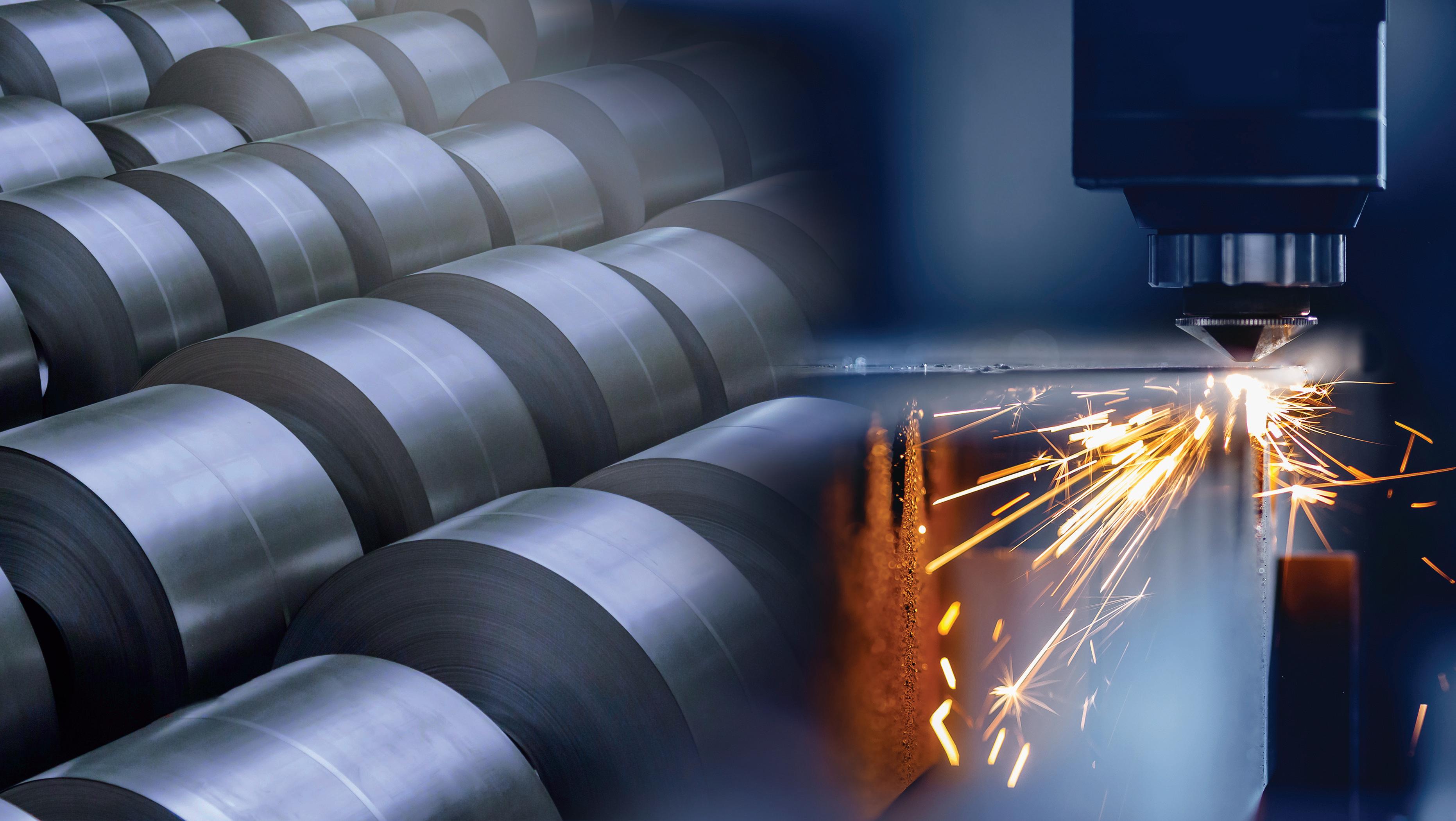
Secondary by name…
In India, secondary steelmaking is not as vibrant as it is elsewhere in the world. Declining capacity utilization levels, an inability to invest in cutting edge technology and being unable to reap the benefits of India’s robust steel consumption growth in recent years has put them on a back foot.
By Dilip Kumar Jha*
INDIA claimed the second largest position in world steel production with a record output of over 126Mt in the financial year 2022-23 (April-March), thanks to primary producers who raised their capacity exponentially in the past eight years to catch the speed of growth in its consumption following a rampant increase in infrastructure development.
However, the secondary steel producers have lost their substantial market share during the same period due to the lack of scale, market accessibility, and working capital, which hindered their greenfield and brownfield expansions, to compete with primary producers. The average size of Indian secondary steel units is so small that they never fall within the ambit of the giant-size primary steel producers. Due to scattered plant spread, even the government sidestepped the secondary producers by prioritizing primary steelmakers.
According to the Ministry of Steel, Government of India, the secondary steelmaking industry has recorded a growth of just 9% in production to 48.91Mt/yr

(metric) in the financial year (FY) 2022-23, compared to 45.02Mt/yr in FY 2014-15. However, primary steel producers witnessed 49% growth during the same period, with finished steel production at 122.28Mt/yr in the recently ended FY 2022-23, compared to 81.86Mt/yr eight years ago. Crude steel production reported a rise of 42% during
the period between FY 2014-15 and FY 2022-23. Overall crude steel production capacity during the last eight years rose 46% to 160.3Mt/yr. With production capacity expansion remaining skewed in favour of primary producers, secondary steelmakers lost their market share substantially in the last eight years, which
13 www.steeltimesint.com September 2023
India’s
Financial year (April
Quantity (million tonnes) 2017-18 4.53 2018-19 5.75 2019-20 5.46 2020-21 4.20 2021-22 3.60 2022-23 9.80
*India correspondent, Steel Times International
import of steel scrap
– March)
Source: Ministry of Steel, Government of India
INDIA UPDATE
Key parameters FY 2014-15 FY 2022-23 Variations (%) Crude steel capacity 109.85 160.3 46 Crude steel production 88.98 126.26 42 Finished steel production 81.86 122.28 49 Secondary steel production 45.02 48.91 9 Consumption 76.99 119.86 57 Per capita consumption (Kgs) 60.8 86.7 43
Expansion
all around (million tonnes)
Source: Ministry of Steel, Government of India, FY = Financial Year beginning April 1 – March 31
currently stands at 40%, compared to 55% in FY 2014-15.
Secondary steelmaking in India
Growing urbanization, industrialization, and the quick development of the auto and construction businesses have expanded the interest in using secondary steel due to its nature of being a cheaper substitute for primary steel in specific applications in these two sectors. Due to its infinite recyclability, scrap recycling has proven to be one of the fastest-growing industries in the world. However, India is yet to catch up with the pace of this growth. The Covid-induced lockdown impacted the production of the big six integrated steel players as well, but they have recovered remarkably once the pandemic abated. The direct impact was felt due to supply disruptions of coking coal. Secondary steel producers are largely dependent on imported thermal coal as they are unable to participate and succeed in government auctions. Owing to the lack of iron ore linkage, scrap price volatility has badly hurt Indian ferrous scrap recycling units.
India’s recycling rate for ferrous metal is significantly lower than the global benchmark. A recent study conducted by the Federation of Indian Chambers of Commerce and Industry (FICCI), the voice for industrial policy advocacy, estimates India’s secondary steelmaking share to be a mere 2.2% (with an overall industry size of US$ 11 billion) in a world market of US$500 billion. However, industrialists have slowly increased their recognition of the importance of large-scale countrywide scrap collection and re-melting.
“India is still in its early stages, with low recycling awareness. Unfortunately, only 30% of India’s recyclable ferrous scrap is recycled due to consumers’ negligence and lack of awareness. While the volume of scrap collection has increased in recent years, India has a long road ahead to reach 100%. In contrast to countries that take pride in using increasing amounts of steel scrap to produce secondary ferrous metal such as TMT bars and thus reduce carbon dioxide (CO2) emissions, India only uses around 30Mt/yr of scrap annually,” said the aforementioned FICCI study.

Constant decline in capacity utilization

The decline in downstream steel units’ share in production is primarily because of a constant decline in their capacity
utilization level, which currently stands at an alarmingly low level of 50.35% in FY 2022-23. Those making crude steel mostly through the induction furnace and electric arc furnace routes are utilizing 55% of their capacity. Units making finished steel, like re-rollers, are struggling at around 46%, nearly the halfway mark of the ideal level of 85-90% of average capacity utilization for a manufacturing sector. Producers in the value-added segment such as cold-rollers, and manufacturers of tinplate, pipes, and colour-coated steel are reporting even lower capacity utilization of around 37%. Sponge iron and pellet makers have witnessed slightly higher capacity utilization at 54%. Most secondary steelmakers operate with obsolete technologies, which they don’t want to upgrade because of the lack of access to banks. A large number of them have been found not maintaining their annual books of account and hence, operate on a day-to-day profit and loss basis. As a result, they end up spending over a maximum of INR 1,000-2,000 more for each tonne of steel production
compared to large producers in the same sector, and sometimes even primary producers, for the same products with matching quality. In the absence of required technologies such as ladle refining facilities, they are unable to ensure product quality by meeting with the requirements of the Bureau of Indian Standard (BIS) and, therefore, end up losing customers.
Another reason for their losing market share is their confinement to local markets. Their freight cost becomes a profit-determining factor. So, downstream players in the steel industry prefer to sell their output to local consumers instead of dispatching the same to distant consumers for higher profit. Additionally, most units in the secondary steelmaking sector are family-run, small-sized, and not rated by rating agencies. Poor corporate governance is also an issue. Hence, banks are reluctant to extend loan facilities to them fearing the piling up of non-performing assets (NPAs). These units lack professional management, skilled manpower, and long-lasting marketing support.
Looming consolidation
The secondary steelmaking industry in India is facing a major threat from the large players within the industry for acquisition. Being much smaller in size, the scrap recycling units do not fit in the ambit of acquisition for primary steel producers. With an average production capacity of a mere 25kt through ferrous scrap recycling, the total 2,500 units scattered throughout the country generate a total production capacity of around 62.5Mt but operate with a lower average rate. While around six recycling units possess a production capacity of around 500kt/ yr, others – around 500 producers – enjoy 100kt/yr, with the remaining producers struggling with between 10-20kt/yr. Most tiny units are family-run businesses with a lack of corporate governance and financial strength to acquire modern technologies for expansion. So, they always look for acquiring similar size or even smaller units that make an insignificant impact on India’s overall steel production.
According to V R Sharma, managing director of Steel Infra Solution Pvt Ltd and former managing director of JSPL, “Secondary steel producers are not on the radar of the big primary steel-producing companies for acquisition. Their small size business does not fit into the larger
www.steeltimesint.com September 2023 INDIA UPDATE 14
companies’ plans. The cost of acquiring them and converting them into profitmaking ventures would be very high. They are also scattered across the country. But these units need government assistance in the form of goods and services tax (GST) exemption and cluster making, among others. They need to scale-up and acquire modern technology to produce the BIS quality product, with environment-friendly units. With their ‘nil’ presence in exports, secondary steel producers need to team up to procure modern types of machinery to
compete with primary producers.”
Anil Nachrani, president of the Chhattisgarh Sponge Iron Manufacturers’ Association, urged the government to allocate 15% of India’s coal production to secondary steel producers from the current level of 5%, in addition to ensuring raw material supply and curbing pellets exports with a duty levy.

Recognizing the importance of their role in the ambitious capacity target of 300Mt/ yr by FY 2030-31 and 500Mt/yr by 2047, India’s centenary year of Independence, the


Central government is formulating a policy exclusively for secondary steel producers to increase their share in overall steel production. For the recycling of steel scrap scientifically, the government has opened six vehicle scrapping centres, with three more planning to begin operations soon. Also, the government has encouraged recycling unit owners to use End-of-Life Vehicles (ELVs) as raw materials for secondary steel production for both public and private sectors.

Conclusion
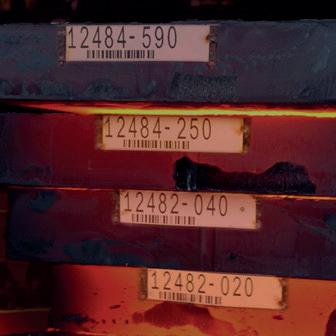

Secondary producers have, so far, failed to reap the benefits of India’s robust steel consumption growth in recent years, backed by long-term infrastructure growth plans. It is highly unlikely that tiny units in this segment will be able to get any significant stake in India’s future growth story, despite being cost-effective to save up to 90% of energy, conserving iron ore and coal for the future, and contributing to the conservation of the environment by reducing mineral extraction. �


15 www.steeltimesint.com September 2023
INDIA UPDATE
CONNECT WITH US AT: INFOSIGHT.COM Visit 20700 US Highway 23, Chillicothe, OH, 45601 WE BARCODE DIFFICULT STUFF ® • Annealing • UV Exposure • 1800oF (982oC) • Pickling IDENTIFICATION THAT SURVIVES: May 6-9, 2024 | Columbus, OH Booth #2603
India is still catching up after the Covid lockdown
Decarbonization under sharp focus

The Global Steel Dynamics Forum (GSDF), held from 26-28 June in New York, attracted a large turn-out of leading steel producers, their service providers and senior US politicians, underlining not only the importance of the event – it was being held for the first time in New York since the pandemic – but also the steel industry’s significance for the US economy.
 By Manik Mehta*
By Manik Mehta*
IN





steel,” he averred.
Ron
the executive director of the Association for Iron and Streel Technology (AIST), which co-organized the event with World Steel Dynamics, said that North America accounted for some 22% of total global steel production. World steel production in 2022 amounted to some 1.9 billion tons, of which North America’s share was 111Mt – a decline of 23% over the previous year.






According to Ashburn, decarbonization was of concern to the steel industry, though he was confident that America would continue to lead in the production of ‘clean steel’. “America can show the world its latest technology and how to make clean
Ashburn also spoke of the ‘very favourable policy’ US administrations had pursued – both the previous administration of President Donald Trump and the current President Joe Biden – underscoring the significance of steel. “America’s future has looked good … it looks better today,” he said.
Taking the lead on decarbonization Decarbonization is the mantra to be followed by the US steel industry.


According to steel industry representatives at the GSDF, a regulation being proposed by the Federal Acquisition Regulatory Council (FARC) would make it mandatory for
*USA correspondent
companies receiving more than $7.5 million in orders annually to disclose greenhouse gas emissions from their business and supply chain.
Firms that contract business above $50 million would also be required to disclose emission levels, conduct a climate risk assessment and set non-binding greenhouse gas reduction targets. But there are some who oppose such mandatory disclosures. Indeed, US Senator Joni Ernst (R-LA) has voiced her opposition to the regulation, cautioning that monitoring supplier emissions will adversely affect even the smallest of contractors.
“If a small business owner determines there is no business case for staying in or





CONFERENCE REPORT 16 www.steeltimesint.com September 2023
his speech opening the conference,
Ashburn,
entering the federal marketplace due to the high regulatory burden, they will leave the federal marketplace altogether, leaving fewer vendors capable and willing to meet government’s needs,” she maintained in a letter she wrote in February.


Ashburn moderated three technologyfocused panel discussions. In one of the panels, Ashish Gupta, chief strategy officer of Primetals Technologies, and Olivier Randet, corporate vice president
of Air Liquide, gave their insights on the question of technology in decarbonization. Gupta noted that projections for global steel production made by various trade associations and government and financial bodies, varied widely between 1.5 and 3 billion tons by 2050.




Randet underscored that the DRI process is the most effective way to transfer hydrogen which is an important element for the steel industry. His assessment was that 70% of steel production in the US is based on scrap.
The importance of scrap

The domestic US steel industry recycles millions of metric tons per year of steel cans, automobiles, appliances, construction materials, and other steel products. The primary source of obsolete steel is the automobile. The re-melting of scrap requires much less energy than the production of iron and steel products from iron ore. Consumption of iron and steel scrap by re-melting reduces the burden on landfill disposal facilities and prevents the accumulation of abandoned steel products in the environment.
Brad Davey, ArcelorMittal’s executive vice president, underscored the importance of scrap and steel recycling in the future, with scrap material accounting for half of global steel demand by 2050.
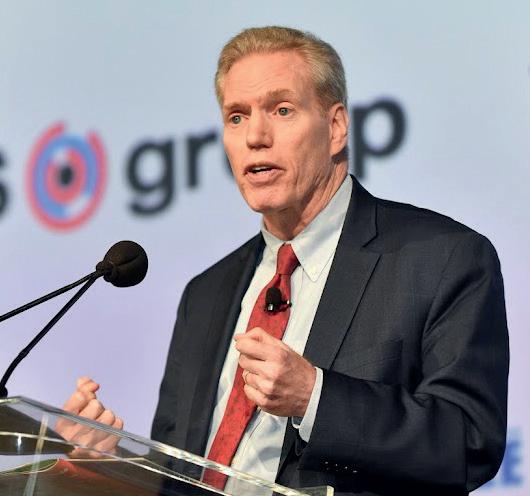
‘Steel will be made in different ways’ Blast furnaces and direct reduction will also be employed, he said, but the industry would use technologies that recirculate existing carbon instead of unlocking stored carbon. One such project, he said, is ArcelorMittal’s Torero project which converts wood waste and end-of-life plastic into bio-carbon. There were several ways for the industry to reduce carbon emissions,

CONFERENCE REPORT 17 www.steeltimesint.com September 2023
“It is important for this part of the world to be recognized for its lowest carbon steel production.”
Philip Bell, president, Steel Manufacturers Association
“
I see a lot of positive moments in terms of growth, demand and production in the US steel industry in part to meet increased demand for steel for clean energy projects.”
Kevin Dempsey, president, AISI.
but ‘steel will be made in different ways in different parts of the world,’ he contended.
Speaking on the sideline, Olivier Randet told Steel Times International that Air Liquide, a leader in industrial gases, was ‘firmly committed’ to climate protection, and provided technology and services for the cause of decarbonization. “Our biggest markets are the steel, chemical, energy industries … we cater to 76 countries around the world and we are market leaders in the United States,” he said. Air Liquide, which is headquartered in Paris, France, operates a regional office in Houston, Texas.
“Hydrogen is today produced from hydrocarbon … we are actively processing hydrogen from carbons. The DRI process operates with the use of hydrogen,” Randet said.
Later, in his presentation about the global steel industry, Jeong-Woo Choi, chairman of the World Steel Association and CEO of South Korea-based POSCO Holdings, said renewable energy was an important element in steel production. He expected dual technologies to become widespread by 2050, ‘on the condition that hydrogen is abundantly available by then’. He said that renewable energy demand would skyrocket.
Asian steel makers, said Choi, had prepared roadmaps for a 22% reduction of emissions by 2035.
Citing POSCO’s example, he said that his company has a production of 40Mt of steel for which 7.3Mt of hydrogen were required. “We will need hydrogen in Australia, Middle East, India, etc.” he said.
Goncalves warns about Mexico
Lourenco Goncalves, CEO of ClevelandCliffs, Inc., said that two factors expected to drive growth in steel demand are vehicle electrification and massive investment which the US administration has signalled
it will make in the modernization and development of infrastructure.
Goncalves said that in his view batteryelectric vehicles and the facilities that are meant to support them, such as charging stations and electrical grid enhancements, and new infrastructure projects made possible by recent legislation, would benefit steel producers.
“The opportunities are there … demand is there,” summed up Goncalves who was bullish, in particular, about the automotive sector. With demand being ‘so fantastic’, he wondered that ‘the recession they have been talking about (is) nowhere to be seen if you look at the automotive (sector) and the employment (opportunities)’.
Nevertheless, Goncalves warned about attempts to circumvent trade laws and the USMCA (US-Mexico-Canada-Free Trade Agreement) content requirement by using Mexico to supply to the US. He was critical about suppliers taking the Mexican route –a veiled reference, perhaps, to attempts by some supplier countries, notably China, to make deliveries of government-subsidized, high carbon content steel to the US – and said that the ‘USMCA is being exploited. The ‘M’ (in USMCA) is not a license for
dumped things to come to the US through Mexico”.
US Sen. Joe Manchin, a West Virginia Democrat who chairs the Energy and Natural Resources Committee, said Congress and trade officials were keeping a close eye on the Mexico transshipment issue.
Despite the alleged transshipment of steel via Mexico, the USMCA, on the whole, had been a positive factor for North America and its steel producers, according to Alan Kestenbaum, executive chairman of Stelco Inc.


“The USMCA has been a resounding success,” he said. “Despite some holes, I think it is encouraging companies to come and invest millions and millions of dollars (in new North American facilities).”
Ternium’s CEO Maximo Vedoya, during his presentation, denied that Mexico had become a ‘transshipment capital’. He acknowledged that transshipments to the US via Mexico was a problem but not an exceptionally acute problem. “We know we have some problem (with transshipments) but the US has the same or bigger problems,” he said, trying to correct the view that Mexico was the “transshipment capital of the world”.
US Congressman Frank Mrvan, vice chairman of the Congressional Steel Caucus – Mrvan’s congressional district in Indiana is home to Cleveland-Cliffs’ East Chicago facilities – said that imports subsidized by foreign governments posed a threat to the US industry. He supported the bipartisan ‘Level the Playing Field Act’ which would allow the US International Trade Commission more flexibility in adjudicating cases and speed up the process.
“The bipartisan effort is to make sure that the steel industry continues to thrive,”
CONFERENCE REPORT 18 www.steeltimesint.com September 2023
Barbara Smith, chairperson/CEO of Commercial Metals Co (centre) receiving the Willy Korf/Ken Iverson Steel Vision Award.
Congressman Mrvan (second from left) receiving a plaque from Cleveland Cliffs’ Lourenco Goncalves (second from right) and flanked by Philipp Englin, CEO of World Steel Dynamics (far left) and Ron Ashburn, executive director AIST (far right).
Green steel
Nucor Corp’s chairman and CEO Leon Topalian said that the steel-consuming industries, particularly those producing higher-end product, were increasingly demanding green steel, a euphemism for the metal produced with the lowest possible carbon emissions.
Topalian seemed to be making a pitch for his own company’s product portfolio, saying that green steel had become important for Nucor’s line of products, considering that green steel was ‘incredibly important’, especially for automotive and higher-end manufacturers. “(These) segments are demanding cleaner and cleaner steels, and waiting for a true-net product,” he said.
He referred to Nucor’s green steel offering Econiq, which was launched in 2021. The first coil was delivered to General Motors in 2022, and the company expects to supply more than 1Mt in the next 12 months. “The segment is growing, and so is demand,” he said.
But producing green steel would also require skilled workers: steel producers were now looking for people who could make it, but the industry was unsure if those workers would be there, Topalian said.


This view was echoed later by Barbara Smith, chairperson/CEO of Commercial Metals Co., as she accepted the Willy Korf/ Ken Iverson Steel Vision Award presented to her at the GSDF. She said that recruiting a talented and capable pool of workers should become the steel industry’s priority, emphasizing that the industry had a ‘compelling case to make as a career choice’.
“We have a great story to tell about our technology-driven operations. We offer young people who increasingly want to
work for mission-driven companies and who are hungry to change the world, a unique opportunity unavailable to them elsewhere,” she said.
The US steel industry has been engaged in an internal debate on whether the country was engulfed in a recession, though there are presently no tell-tale signs.
adding that the medium and long-term economic outlook for the US is very bright.
Dempsey optimistic
Kevin Dempsey, president of the American Iron & Steel Institute (AISI), in an interview with Steel Times International, commenting on the current situation in the US steel industry, recalled that a number of forecasters at the start of the year talked about recession, slowdown, etc., “but I think… things are moving in the opposite direction and are getting stronger in the US industry. So, we see the numbers improve and we are optimistic for the rest of the year on growth and demand”.
Inflation
However, he acknowledged that inflation is a “very difficult issue and the Federal Reserve is very much focused on it. I think we see signs of inflation moderating, coming down to some extent … it’s not been fully tackled, so I think it is going to be a big challenge, but I think, again, things are generally moving in the right direction … and we’re going to see interest rates at the current (high) level or even a bit higher up, but overall I think it is still manageable. However, I think it will take longer than it was originally hoped to resolve it. The Federal Reserve and the other central banks are very focused on it (and) I think it’s going to be dealt with”.
Dempsey explained that he had highlighted the US industry’s plans on sustainability over the next decade.
Inflation has been at a peak for some time – it has, meanwhile, moderated slightly –but there are plenty of job opportunities. Indeed, some industries, starved of skilled workers, are willing to pay attractive compensation for those qualified.
Roy Sweet, chief US Economist at Oxford Economics, tried to put ‘things in perspective’. In his view, employers would be very reluctant to lay off staff unlike in the past when jobs were simply axed. He drew comparisons with 1980 stagflation which was ‘simply a nightmare’. “But now we have inflation while wages will also rise in keeping with rising prices. Today, we have a soft-landing recession. It’s a medium form of recession which is preferable to stagflation … In short, it’s not a severe recession, just a mild one. The economy is growing less quickly than expected. Demand for homes will be strong,” he said,
“I see a lot of positive moments in terms of growth, demand and production in the US steel industry in part to meet increased demand for steel for clean energy projects and other sustainability projects that are being spurred by the ‘Inflation Reduction Act’, but I did note that the one issue that still required work was to establish a new trade policy scheme that takes carbon intensity into account because the investments to decarbonize are very expensive and US industry is spending a lot on that,” he said.
Dempsey was worried about information gathered from presentations by Southeast Asian steel industry representatives, showing that there ‘is a lot of additional capacity in Southeast Asia that is very high emission-intensive; that steel will probably be very competitive on a cost basis and the fear is that if we don’t have tariffs to level the playing field, we could see new
Myvan said.
CONFERENCE REPORT 19 www.steeltimesint.com September 2023
Lourenco Goncalves, CEO of Cleveland Cliffs Inc (left) said vehicle electrification will drive growth in steel demand.
Olivier Randet of Air Liquide.
surges in low-cost but dirty steel from other regions that could undermine efforts at sustainability in terms of new investment in the US.”
Asked what he thought about US Congressman Frank J. Mrvan’s comments on subsidies for decarbonization for other countries, he replied that he did not recall what Congressman Mrvan had said, but felt that there are government efforts to incentivize decarbonization. However, he added that the incentives were, for the most part, being given not on an industryspecific basis, but in ways through the tax code that would benefit many different industries.
“In that sense, I don’t think they will be trade-distorting subsidies. The WTO rules generally distinguish subsidies that are specific to an industry that are considered trade distorting, and subsidies or government assistance that generally are available in the economy. I can refer to roads and bridges that benefit all businesses … what the Inflation Reduction Act provides for are tax credits to incentivize building of clean energy... solar, nuclear, hydrogen … but those are all things that are going to benefit not just the steel industry but also many other industries.”
He maintained that this would be helpful and encourage the move generally towards further decarbonization in the US, and were not intended as subsidies that provide advantage, from a trade perspective, to specific industries or specific companies.
The ‘Infrastructure Bill’ is designed to fulfill the requirements of using USproduced steel under the “Buy America” policy. The rider also includes money to promote the ‘Buy Clean’ policy where the government is looking to procure goods and will seek to buy the cleanest goods. “That’s designed to incentivize … to further move towards clean energy. It is designed to send a signal to the market about the government’s view on the importance of decarbonization,” Dempsey explained, adding that it will highlight the value of the environmental product declaration – EPDs – as a way to document the environmental performance of different steel products.
Nuclear energy?
Leon Topalian, vice chairman of the World Steel Association and CEO of Nucor Corp, had earlier talked about the use of nuclear energy in the steel industry. He said that the use of nuclear energy in the steel industry
was ‘very realistic’. But he clarified that this was not ‘the nuclear energy of bygone years’. Nucor had made its own investments in a particular company in the US that is building small modular reactors designed to be scalable and located at a particular plant to provide energy for that facility. The company is going through the approval process.
Asked about any risks in using nuclear energy, Dempsey said that there would be safeguards “and, besides, it will be on a much smaller scale than the very big nuclear power plants. I think it’s very exciting and it’s a great opportunity for steel and probably other industry, especially if you are building electric arc furnaces and you need a steady supply of clean energy,” he
said, predicting that small modular nuclear reactors will be game changers. One of the tax credits in the Inflation Reduction Act is for nuclear energy.

Amid the automotive industry’s move towards electric vehicles (EVs), Dempsey revealed that the AISI was undertaking research on how steel could be best used to make boxes that protect EV batteries. He said the AISI had one – unnamed –company producing electric steels essential for EV batteries and motors. “EVs are a huge growth area for steel and an important market.”
Dempsey was bullish about steel industry growth this year and next, citing benefits and incentives designed to promote the semiconductor industry.
He said it was difficult to say how long steel tariffs under Section 232 against steel imports would continue. The tariffs were imposed to tackle overcapacity, which is ongoing. “Earlier this year in March, the OECD steel committee reported that their estimates for global overcapacity for steel last year had increased from 517 million metric tons (mmt) to 632 mmt, an increase of 100 mmt in one year. Unfortunately, the problem of overcapacity is getting worse. That’s why we need those tariffs …. they are going to continue until we can get a handle on the problem,” he said.
Bell praises US low carbon steel Philip Bell, president of the Steel Manufacturers’ Association (SMA), while lauding government measures to prop up the steel industry, endorsed its policy to stimulate growth in supply and demand of steel.

In an exclusive interview with Steel Times International, Bell said that the ‘big takeaway’ from the panel he moderated at the GSDF was that North American steelmakers consistently produced the lowest carbon intensity steel in the world. “It is important for this part of the world to be recognized for its lowest carbon steel production and other parts of the world need to see how they emulate that,” he said.
Some Chinese steel representatives, in private conversations, called US trade policies ‘unfair’ – an obvious reference to US steel tariffs enforced since 2018 – and wanted to have these withdrawn. “In North America, we believe in free trade, but it has to be fair trade also. In the case of tariffs, the reason we have them is two-
CONFERENCE REPORT 20 www.steeltimesint.com September 2023
“America can show the world its latest technology and how to make clean steel.”
Ron Ashburn, executive director, AIST
Ryan Sweet, Chief U.S. Economist, Oxford Economics.



















































































































































































TECHNOLOGIES, INC. taylor-winfield.com +1.330.259.8500 Taylor-Winfield’s Technology is Unlocking Profitability in Finishing Lines More Data. Less Weld Breaks. Less Downtime. Weld breaks – and the related downtime – are the enemy of every finishing line. With the rising cost of raw materials and labor, downtime is getting more expensive. That is why steel producers are turning to advanced technology & machine automation o ered by Taylor-Winfield. Our coil
with the most advanced features in the world, all of which work
the line. The question isn’t if you can a ord to
to. Force, Current and Carriage Monitoring & Validation Veriweld ™ Weld Quality Verification Automatic Weld Parameter Download and Set Up Fully Automatic Machine Operation Smart Machine Compatible & Remote Connectivity Inline Pre & Post Weld Induction Heat Treatment More Profitability.
joining welders are equipped
together to virtually eliminate weld breaks in
upgrade or replace your coil joining welder, but if you can a ord not
fold: one, to prevent state-subsidized steel from flooding our market and, secondly, to reduce the amount of high carbon emitting steel that is coming to our market. When China exports subsidized state-owned high carbon steel, they are stealing jobs from North Americans and producing CO2 emissions that make our environment worse,” Bell explained.
Steel producers optimistic
Calling the present market conditions ‘pretty good’, Bell discerned some optimism among North American steel producers, with strong demand fundamentals and government policies as well as some legislation to support steel demand. The Infrastructure Investment and Jobs Act passed two years ago, and the Inflation Reduction Act should increase steel demand and help reduce emissions. “There are a lot incentives that are for solar, wind, hydro, electric vehicles, hydrogen hubs and all of those solutions to CO2 emissions involve steel. So I think we are really good. Other things like the Chips Act come into play as well as the Department of Energy’s decarbonization roadmap,” he said.
The Infrastructure and Jobs Act was aimed at using American taxpayers’ dollars to buy American steel – steel that is melted, poured and processed in the United States. “And that’s a good thing because the US is already the lowest carbon producer in the world … having this requirement will not only increase domestic steel demand but it will lower carbon emissions. So, this policy has a dual benefit,” he noted.
One of the subjects discussed at the GSDF conference was the production of light steel suited for use in EVs which need a special steel, but some analysts asked if the US can produce it in sufficient quantities.


“Yes, there is enough capacity as well as process technology for American steel producers to make every grade of steel that is needed for the growth of the electric vehicle market – whether that is advanced, light-weight high-strung steel for the exposed bodies of the cars, whether that is electric steel needed for the electric batteries. We are in a position to make all of it and we are adding state-ofthe-art capacity … that’s modernizing, decarbonizing and electrifying the domestic steel industry,” Bell replied.
Besides EV production, the construction industry is very promising, according to Bell. “As far as the end-user market is concerned,
keep in mind that 75% of steel goes either into construction projects or automotive manufacturing and both these sectors are looking good. We also see an increase in demand in advanced manufacturing –the type of manufacturing that requires state-of-the-art advanced high-strip next generation steel. I think all three markets are going to do very well.”
Quotas and tariffs
The Biden administration has negotiated a deal with the EU exempting it from blanket tariffs and, instead, allowing a quota system. If that quota is exceeded, such supplies would attract tariffs. Asked if similar arrangements could apply to Asian suppliers, Bell said that ‘remains to be seen’.
“The American market will always need a certain percentage of fairly traded imports. I am not naïve, I understand that. But the fact of the matter remains that those imports need to be fairly traded. They cannot be subsidized imports, they cannot be state-owned imports, they cannot be the result of global excess steel capacity,” he explained.
But Bell said that one under-reported
fact was that there ‘isn’t really as much steel subject to tariffs as people think. I want you to just think for a moment: when the (Section) 232 tariffs were put in place, very slowly the steel covered by 232 began to decline. You first saw it with the USMCA (United States, Mexico, Canada) agreement which basically meant that steel from Mexico and Canada were no longer subject to tariffs. Keep in mind that Brazil, Argentina and South Korea were all on quotas, not subject to tariffs but on quotas which allows them to export up to a certain volume.”
Robust exclusions process
The US, he emphasized, had a robust exclusions process which allowed a steel buyer, unable to source the steel domestically – either due to reasons of availability, lead times or quality – to apply for exclusions, and in most cases they did get it. Millions of tons of steel are subject to exclusions. “So between the USMCA, the quotas and the exclusions, a lot more imported steel got into this country without tariffs than people realize.”
On the continuing high inflation in the country, Bell admitted that there had been some inflationary pressures over the last couple of years but “we do see them moderating“. Most of those inflationary pressures were related to energy and food costs, not so much to steel or raw-material costs. “I think it is starting to moderate and I don’t necessarily think it will continue into the near future. So, we are cautiously optimistic that inflation will be under control in the US and North America and it won’t negatively impact the steel industry,” he said.
Asked if he agreed with the characterization of the ongoing economic scenario as a ‘recession with a soft landing’, as stated by one of the speakers at the conference, Bell replied that a ‘lot of pricing decisions in the US are based on market fundamentals and demand. If there is steel demand, steel producers will implement modest price increases and recently you saw this with most major producers. Also, the job numbers in the US … are actually pretty good’. The people were employed, they made good money and would buy steelintensive goods, whether that is housing, appliances or automobiles. “So, I think the soft-landing scenario is relatively accurate but, of course, none of us has a crystal ball. We cannot predict everything …” �
CONFERENCE REPORT 22 www.steeltimesint.com September 2023
[ State of the art Roll Texturing technology ]


The Multi-Servo Array EDT delivers unrivalled roll texture control and consistency. The informed choice for surface critical strip. First orders secured. Please enquire below for further information.

[ Rollscan Roll Inspection ]
Surface to core roll inspection for back up and working rolls in hot and cold mill applications. A choice of units to meet your needs, backed by local engineering, service and support.
[ Strand Condition Monitors for Continuous Casting ]

sales@sarclad.com
sales@sarcladna.com



sales.china@sarclad.com
sarclad.india@sarclad.com
Sarclad is your proven partner for a bespoke solution for your caster. In-Chain and off-line SCM solutions available. Please enquire below. sarclad.com

RolltexMSA
Italy, Germany, Sweden, Austria, France, The Netherlands, UK, Spain, Turkey, USA, Brazil, Thailand, India, China, Japan

DAN IELI T R U E GRE EN ME T A L
MIDA–QLP QSP–DUE
in Buttrio,
www.danieli.com
Buy the Original
Danieli Headquarters
Udine, Italy
@danieligroup
MIDA–QLP and QSP–DUE are the winning Danieli direct-rolling technologies for the most competitive production of long and flat green-steel products.
They are the result of the research and continuous improvement profused over 20 years, along with multi-million dollars of investment. Their unmatched performances have fueled their success worldwide, thanks to lower resource consumption and carbon emissions, unbeaten OpEx, and outstanding product quality.

So, top technology becomes copied technology, the shortest route for competitors that, abandoning their solutions, now try to imitate MIDA–QLP and QSP–DUE Equipment and layout may be copied, but experts know that details make the difference. Automation and process solutions are not easy to copy, and this will be the experience of anyone trusting in those imitations.
The competitive advantage for our customers, obtained by field results, is the best defense for our technology – more than court rulings protecting our patents.
Danieli offers the best guarantees for speedy learning curves, steady performances, and now Digital Plants with no men on the floor. Buy the Original.
GIANPIETRO BENEDETTI CHAIRMAN OF THE BOARD OF DIRECTORS
Ovako – Sweden’s largest producer of green hydrogen
The world steel industry accounts for between 7-8% of global CO2 emissions, hence alternatives to fossil-based fuels are being sought to lower the carbon footprint of steel production. Hydrogen produced from renewable electricity is a fossil-free alternative which is actively being developed as an alternative fuel and reductant. This article is the result of a visit to Ovako’s Hofors plant where an eight tonne per day hydrogen plant is nearing completion.
By Tim Smith*
OVAKO specializes in the production of high-quality long products by the electric arc furnace (EAF) route using 100% scrap steel as its raw input. The Group was formed in May 2005 by the merger of bearing manufacturer SKF Hofors steelmaking plant, Fundia’s steel plant at Smedjebacken – both in Sweden – and Rautaruuki’s Imatra Steel in Finland. In


addition to these three steelmaking plants there are a further six processing plants. The Group members, which have a heritage of steelmaking stretching back some 500 years, was acquired by Nippon Steel Sumitomo Metal Corp in June 2018 and grouped with their specialist steelmaking division, Sanyo Special Steels. A profile of Ovako and a description of their steel
*Consulting editor, Steel Times International
products was published in Steel Times International April 2019 pp42-48.

The company has one of the lowest carbon footprints for steel production in the world. In 2020, the carbon footprint to cast steel from its three steelmaking sites ranged from 60kg/t at Smedjebacken, through 80kg/t at Imatra and 124kg/t at Hofors. This compares with an average for









DECARBONIZATION 26 www.steeltimesint.com September 2023
EAF producers using 100% scrap of 670kg/t of cast steel calculated by the World Steel Association (worldsteel). Measured to hot rolled bar (cradle to gate – ie from raw material processing, transport to steel plant and transport to sold product) these three steelmakers recorded values of 389, 439 and 467kgCO2e/t respectively in 2019. This compares with a global average of 2600kg/t hot rolled bar, but this figure is inflated by including production of steel by the blast furnace – basic converter route (BF-BOF) which presently accounts for 73% of all steel production and includes mining the ore as well as the use of coal to make coke for the blast furnace. (Table 1)

Ovako reduced its total CO2 equivalent footprint from 401kt/yr in 2015 to 180kt/ yr in 2020 – a 55% reduction. Based on 2020 volume of production it is targeting a further 80% reduction from the 2020 figure by 2030 to 80kt/yr and a 90% reduction to 40kt/yr by 2040.

CO2 emissions are verified by a thirdparty organization with calculations and data collection carried out according to ISO14064-1 and the Greenhouse Gas Protocol. With the aim of achieving these targets, Ovako will also buy offsets until the necessary technology advances have been achieved but will limit these to 100kg per tonne of steel produced. In January 2022, Ovako became the first steelmaker worldwide to achieve 100% carbon neutral operations.
The reduction between 2015 and 2020 was achieved by using non-fossil fuel electricity (Sweden’s generation balance is presently Hydro 43%, Nuclear 31%, wind 16% with 10% others). Reductions were achieved by converting some of its heat treatment furnaces from propane to electric heating, improving process and energy efficiency, upgrading and changes in operating methods, optimization of reheat furnaces and the supply of excess heat as steam for district heating.
The further 80% reduction from 2020 to 2030 is being achieved by lowering internal transport emissions, the completion of the conversion of heat treatment furnaces to electricity, fuel conversions in the rolling mills, more efficient internal flows, improving yield and adopting dual-fuel to the burners in the ingot pit furnaces at Hofors to burn hydrogen or propane with oxygen.
Hydrogen project

Presently, the use of hydrogen to fuel

DECARBONIZATION 27 www.steeltimesint.com September 2023
Table 1. Carbon footprint of Ovako versus world average
Smedjebacken 60 389 Imatra 80 439 Hofors 124 467 World Average 670* 2600**
Steelmaker kgCO2e To cast per tonne kgCO2e to hot rolled bar per tonne
*worldsteel value for 100% scrap charge to EAF **Ovako value for EAF and integrated mills
Fig 1. Each Atmospheric Alkaline Electrolyser consists of a series of stacks making up the anode, the cathode and a membrane through which water circulates: 1. Electrolyser stack 2. H2 separator tank, 3. O2 Separator Tank, 4. Gas Cooler, 5. Lye Cooler
Fig 2. Principle of electrolyser
Fig 3. Comparison of oxy-propane flame with oxy hydrogen flame using same burner
reheat furnaces is being adopted at Hofors with the aim, if successful, of building separate hydrogen plants at all of its sites using furnaces.

To this end, a 20MW Atmospheric Alkaline Electrolyser plant is nearing completion at Hofors capable of producing 4000m3 of hydrogen per hour and half this volume of oxygen. Eight generating units have been installed along with a transformer, rectifier, scrubber, separate H2 and O2 gas holders, compressors and dryers.
Each Electrolyser (Fig 1) consists of a series of stacks about 1.75m in diameter made up of a circular anode electrode and a similar-shaped cathode electrode with a membrane separator between the two. Each pack is made water tight by means of a gasket each side of the separator sheet. Manifolds conduct the hydrogen evolved at the cathode and the oxygen at the anode to separate storage tanks (Fig 2). A series of over 100 such stacks are put together to make up an electrolyser unit through which ordinary potable tap water is circulated, to which 25% ‘Lye’, consisting of potassium hydroxide, is added to increase conductivity. The Lye is not consumed by
SSAB’s HYBRIT
The acronym, HYBRIT stands for ‘Hydrogen Breakthrough Ironmaking Technology’ and is being developed by Sweden’s integrated steelmaker, SSAB in partnership with ore producer, LKAB and energy supplier Vattenfall. HYBRIT uses the established technology of a shaft furnace to produce solid iron by direct reduction (DRI).
In the established technology, natural gas is reformed to produce hydrogen and carbon monoxide to reduce pellets of low gangue-containing ore. This high-quality ore must be used as no molten slag is formed
PEM electrolyser
The PEM (polymer electrolyte membrane) electrolyser is an alternative method of splitting water into its component elements. The electrolyte is a solid specialty plastic. Water reacts at the anode to form oxygen and positively charged hydrogen ions. The electrons flow through an external circuit and the hydrogen ions selectively move across the PEM to the cathode where they gain an electron and are so evolved as atomic hydrogen.
Anode Reaction:

2H2O � O2 + 4H+ + 4eCathode Reaction: 4H+ + 4e- � 2H2
the process and can be cooled and remain in circulation as the consumed water is replaced. Eight electrolysers are installed. Water consumption for electrolysis is 9m3 per hour, with an additional 255m3/h for cooling in a closed circuit, from which heat is extracted for a district heating system.
Because of the corrosive nature of this Lye and also the risk should gas escape, the units are operated in a well-ventilated isolated room free of personnel. Indeed, one of the important achievements was to gain a full environmental permit which was applied for in March 2020 and the design finally granted in November 2022. This was followed by the first delivery of the electrolysers.

Maximum energy consumption is rated as 4.4kWh/Nm3 of gases, or 17MW/h , plus 2.5MW for auxiliary equipment. Output gas rates are 3880Nm3/h of hydrogen equating to eight tonnes per 24 hours. Oxygen output is half this volume at 1940Nm3/h. The gases are pressurized to greater than 5 bar and 15 bar respectively. At present, the size of the unit is confined to 20MW by

to separate from the iron. The iron in pellet form is then melted in an electric arc furnace. The conventional DRI-EAF process still has a carbon footprint calculated by worldsteel as 1.65tCO2e/t cast steel as a global average, all be it less than that of a blast furnace-oxygen converter route which has a world average value of 2.32tCO2/t cast steel.
SSAB intends to replace its blast furnace at Oxelösund with an EAF charged with HYBRIT DRI by 2025. Later, the blast furnace at Luleå will be replaced with HYBRIT DRI. Large amounts of hydrogen are required for the reduction process and hence storage is necessary of this small molecular size element which readily diffuses through many materials. SSAB has successfully conducted trials of underground storage of hydrogen in a rock formation. HYBRIT has many technological challenges to face, but, if successful, SSAB will be the first producer of fossil free steel in the world and will reduce Sweden’s CO2 emissions by 10% and Finland’s by 7%.
DECARBONIZATION 28 www.steeltimesint.com September 2023
Eight electrolysers will produce 8t of hydrogen every 24 hours
The hydrogen buffer tank smooths supply but does not store a significant amount of gas
Proven solutions for carbon capture

Ready to invest in carbon capture? Munters has the expertise and equipment to support your project. We have decades of experience in Mass Transfer and Mist Elimination – Clean technologies that are essential to any successful carbon capture project, no matter the industry. You can count on Munters proven solutions to support your carbon capture project.
Clean technologies by Munters
Learn more at www.munters.com/cleantechnologies
DECARBONIZATION
limitations in the grid network supply. The electrolysers are supplied by Norwegian-based NEL Hydrogen, the transformers, rectifiers and switchgear by Hitachi Energy Sweden AB.
The ‘colour’ of hydrogen

48% of hydrogen is presently produced by steam reformation of natural gas, 30% from oil, 18% from coal and 4% from other sources including electrolysis. The ‘colour’ of hydrogen produced refers to the method of production.
Green Electrolysis using renewable power Blue Steam reformation of natural gas with CO2 capture Turquoise Steam reduction of NG with carbon produced as a solid Grey Steam reformation of fossil fuels without carbon capture. Red Pink Violet Electrolysis using nuclear generated power Yellow Hydrogen as a byproduct of another process.
Using the gases
Hofors specializes in producing ultra clean steels in particular for bearings applications. As a result, it is one of the few companies using the ingot casting route, bottom teeming 4.2 and 8.4 tonne ingots. On stripping, these are hot-charged to soaking pits. The hydrogen will be used to replace the propane fuel presently used by the single burner in each pit. The original burners supplied by Linde have been successfully tested with hydrogen and are now configured to run on either fuel (Fig 3). Despite the net heating value by volume of hydrogen being 8.6 times lower than that of propane, the same burner can be used for both fuels. Should there be a shortage of hydrogen for any reason, or at peak demands for electricity on the grid, and hence peak prices, the burners can instantly be switched to propane. However, this generates 200kgCO2e per tonne of steel reheated. No storage of hydrogen

is incorporated in the circuit other than a relatively small buffer tank. The burners are oxy-fuel burners of the ‘flameless’ type to minimize NOx emissions. The oxygen will be supplied as the byproduct from producing hydrogen by electrolysis.
The lack of storage of hydrogen is in contrast with Sweden’s integrated steelmaker, SSAB, who, in its HYBRIT process, is investigating the reduction of ore to solid DRI (Direct Reduced Iron) (See Box)


Ovako is further promoting the use of hydrogen in an agreement with Volvo trucks to supply the gas to their generation of fuel cell-powered trucks currently being developed. With the eventual network of hydrogen electrolysers at each of its Swedish plants, hydrogen will be available for fuel cell automotives in southern Sweden and northern Finland.
Not only is Ovako leading the way to produce steel by the EAF route, achieving


zero carbon emissions in January 2022 by a combination of technology advances and minimal carbon-offsets, but its products also help reduce emissions in their applications. One third of the world’s wind turbine generators use Ovako steel in their bearings and gear boxes. Its aim to establish six or seven fossil-free hydrogen plants in Sweden and Finland will not only stabilize the power grid but is enabling Volvo to be assured of re-fueling a generation of hydrogen fuel-cell trucks currently being developed. The purchase of carbon offsets is being kept to a maximum of 100kgCO2/t steel and will be phased out once technology alone can achieve its goals.
Meanwhile its verified projects include the replacement of coal-fired power stations in South Africa with wind turbines and preserving 64,000 hectares of tropical forest in Indonesia, otherwise marked for felling for palm oil estates. �
30 www.steeltimesint.com September 2023
A range of Ovako’s product portfolio
The ingot soaking pits will be fired with oxy-hydrogen and oxy-propane available as stand-by
Radar technology for rolling mills

Implementing green steel is crucial, but it means high investments. Meanwhile, there are quick, cost-effective solutions for a more energyefficient and productive rolling mill that emits less CO2. Innovative radar makes it possible.
GREEN steel – steel produced using carbonneutral or low-carbon energy sources such as clean hydrogen – is rightly seen as the ‘gold standard’ for lowering CO2 emissions and reducing the industry’s impact on climate change. On the other hand, green steel needs considerable investment and today is still 20% to 30% more expensive than conventional steel, even if the costs are rapidly decreasing .
However, there are less investmentintensive solutions for quickly reducing the production costs as well as the carbon footprint, while at the same time increasing the quality of rolled steel and plant productivity. An example is the optimization and automation of the rolling process via highly precise and robust radar systems. Make no mistake: This is clearly not an alternative to green steel, but rather an additional, smart way of quickly lowering costs and CO2 emissions.
As a leading provider of highperformance sensor technology for challenging industrial environments, OndoSense has developed a radar solution for the reliable measurement of the thickness or width of long and flat steel. The robust, low-maintenance radar technology measures semi-finished metal products with an accuracy of 300
micrometers and can be easily retrofitted to the rolling plant.
Rolling steel: essential for the economy, but energy-intensive Rolling mills are irreplaceable when it comes to making high-quality metal products that are needed in basically every sector of the economy. Through reheating and rolling, metal products gain in strength and ductility. Whether steel, aluminium, copper or other metals, each of us relies upon them daily when using washing machines, cars, watches, computers, houses or bridges. Producing and rolling steel, however, is energy-intensive and currently still uses large amounts of fossil fuels. Improving the energy efficiency of the rolling mill plants is crucial for lowering production costs and reducing the carbon footprint, thereby making the steel and metals industry fit for the future. Every advantage that can be gained by optimizing energy consumption has a direct effect on the competitiveness of a steel production site.
Wanted: effective sensor technology for inline measurement of rolled steel Measuring the dimension of slabs, beams, rails, billets, bars, steel piles or other semi-finished metal products with
great reliability and high accuracy is a challenging automation task in the harsh production environment of the metal industry. Therefore, manually inspecting the width and thickness of semi-finished metal products by caliper is still the predominant procedure at certain locations in the rolling mill.
However, automating this demanding job does not only make sense regarding the obvious safety issues: It is necessary when it comes to achieving a higher degree of accuracy, as the resolution of the caliper is limited to 1 mm. Also, the manual measurements can only be performed after the rolling of the metal. At this point in the production process, it is too late to adjust the rolling parameters if the product dimensions do not match the specifications. In the worst case, this can result in lasting damage to the rolling infrastructure and machines.
Sensitive optical sensors – x-ray safety issues
With metal temperatures of up to 1300° Celsius, adverse light conditions, steam, dust and vibrations, automating this task is often severely limited with conventional optical systems such as laser sensors.
The sensitive optical electronics must
ROLLING 31 www.steeltimesint.com September 2023
1.
https://www.mdpi.com/2075-4701/10/7/972. Science
See
magazine estimates that the price difference will be erased in the 2030s because of the rising costs of CO2 emissions.
be protected from the heat and the lens requires frequent cleaning. These tasks are not only labour-intensive, but introduce significant costs from downtimes. Furthermore, glowing hot metal, changes in reflectivity, rough metal surfaces and dusty environments can lead to frequent measurement failures or errors. Lastly, for optical systems to work in these environments, the line of sight often needs to be cleaned using large amounts of pressurized air. This is an energy-intensive task that can result in high six-digit costs for energy bills.
Traditional measurement systems that rely upon X-ray technology or radioactive gamma emitters have other disadvantages: First, for radiometric measurement systems to be accurate enough, they need to be calibrated for every metal alloy – a complicated and time-consuming task. Second, radiometric systems cannot be used for width measurement and the accuracy of the system decreases with an increase of the thickness of the product. A third drawback is that due to the geopolitical upheavals in the aftermath of the Ukraine war, the radioactive caesium sources required for the thickness measurement of slabs, plates and strips above a thickness of approximately 50mm are no longer available. Last, but not least: Ionizing radiation presents obvious safety and health challenges for workers in the plant. Access to the plant areas where the radioactive source is located needs to be heavily restricted and safeguarded. This is again time-intensive, costly and a safety hazard.
Robust radar sensors are ideal for the metal industry
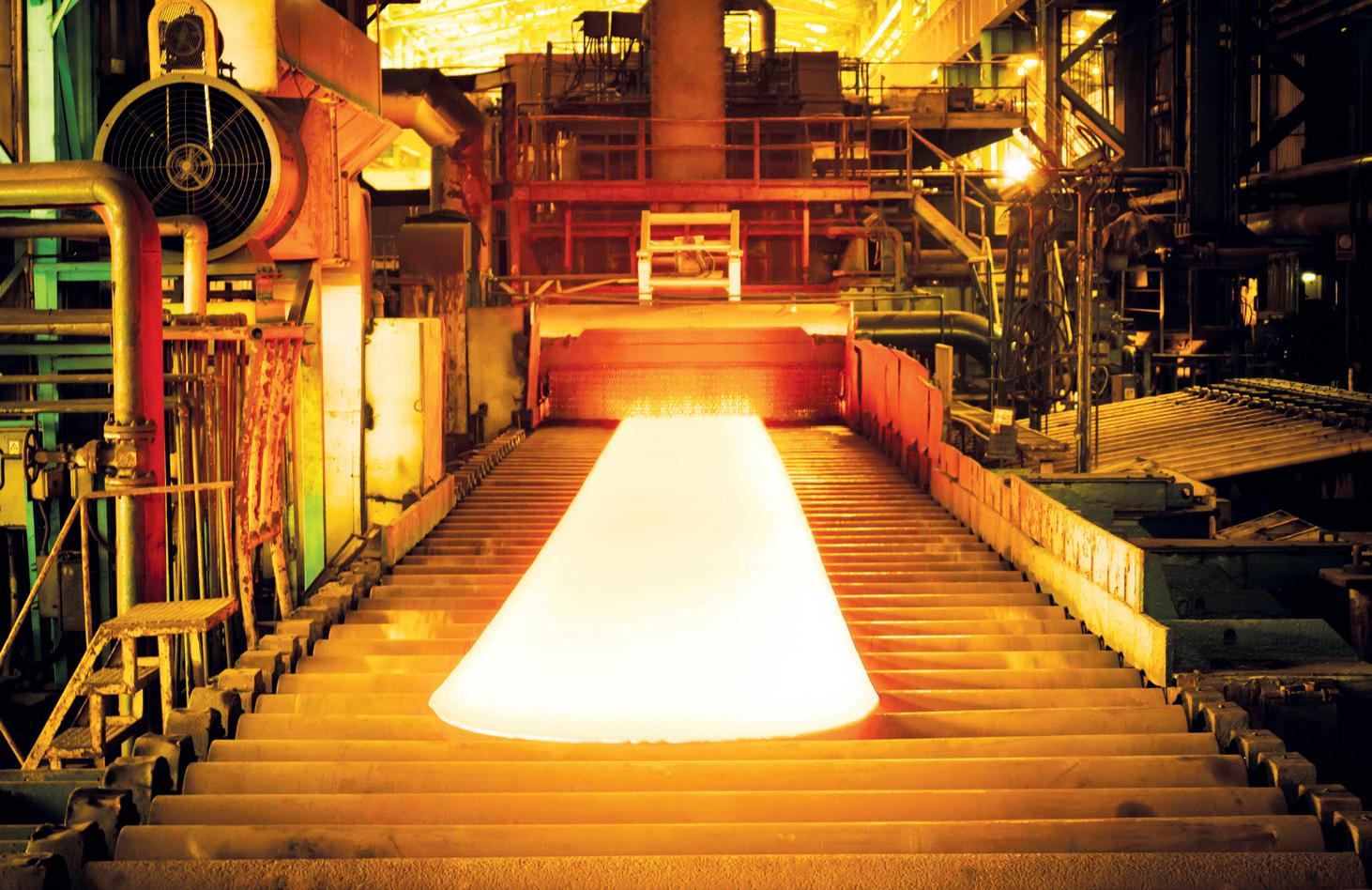

By contrast, the OndoSense radar sensor solution presents no health challenges and
is used by a variety of customers to safely measure the width of slabs, billets, beams as well as other semi-finished metals early in the rolling process. Thanks to robust radar technology and smart radar AI algorithms, even 1300° hot metal products can be reliably measured with an accuracy of up to a few micrometers and a measurement rate of up to 300 Hz. Radar sensors are ideally suited for the harsh conditions of the metal industry, since water vapour, dust, smoke, or challenging lighting conditions have no influence on the measurement result. A thickness measurement system that uses OndoSense radar sensors and achieves accuracies of less than 0.02 mm is currently being tested.
For dimension measurements, two radar distance sensors are placed on both sides of the product. The width or thickness of the metal product is calculated by adding the two distances and subtracting the known
distance between the two sensors. As the measurement is independent of the chosen material, there is no need to calibrate the sensors when inspecting a different metal, alloy or surface type – for example, rough or polished metals.
If needed, a heavy-duty housing made of stainless steel can protect the sensor against extreme temperatures. It uses a heatresistant shield which protects the sensors from the irradiation of the glowing steel products. The sheet is transparent to radar waves and, therefore, does not affect the reliability and accuracy of the measurement.
The OndoSense radar sensor system requires little maintenance, needs almost no cleaning and is easily integrated into the manufacturing process, which means the rolling mill can be retrofitted with minimum effort. Also, since radar waves have a significantly longer wavelength than optical sensor technologies like lasers, they are not
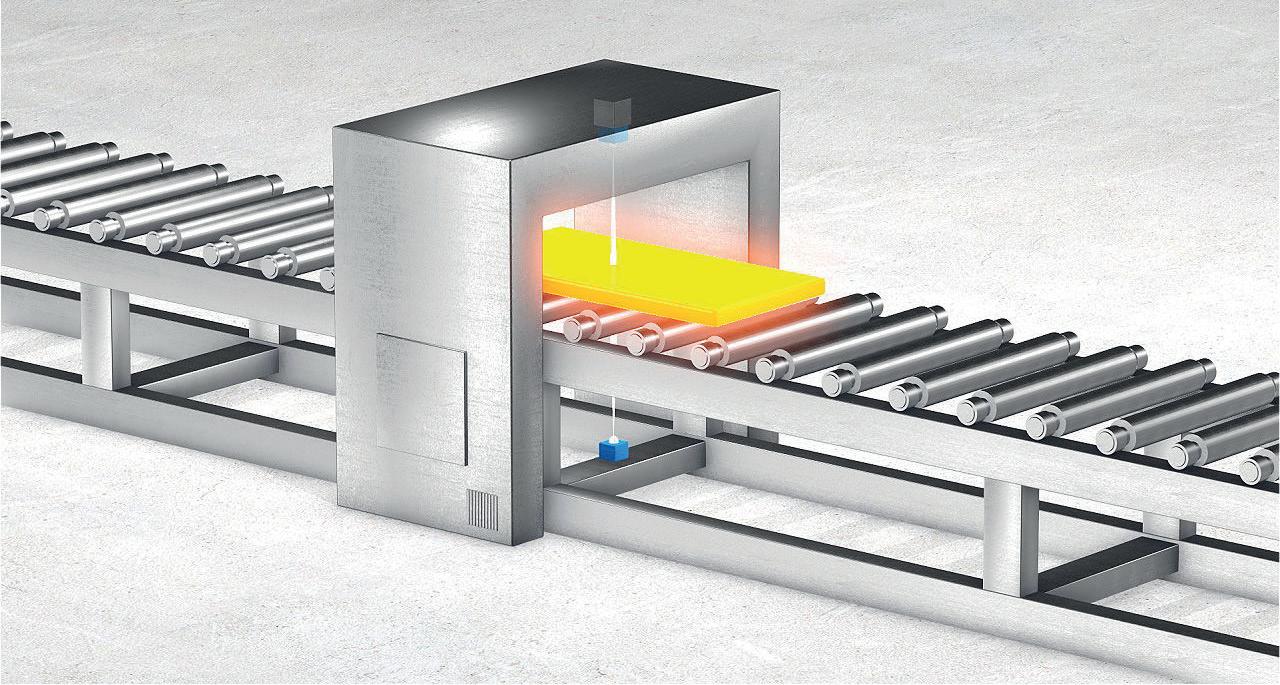
ROLLING 32 www.steeltimesint.com September 2023
Illustration of thickness measurement of metal slabs using the OndoSense apex radar sensor system. © OndoSense
Illustration of width measurement of metal slabs using the OndoSense apex radar sensor system. © OndoSense
Thickness measurement or width measurement of slabs in the hot rolling mill. ©Pnor Tkk – Shutterstock
affected by small particles found in dust or mist, leading to reliable measurement results
Efficiency and productivity improvements
It is claimed that radar systems can significantly automate and improve the monitoring of the rolling process and thereby increase the productivity and efficiency of the rolling plant. As metal products with defective dimensions can be identified inline, the rolling parameters can be adapted in time to avoid production
line stoppages, the scrapping of costly material or damages to the rolling lines or trimmer units. This not only saves precious maintenance time and improves product quality, but ultimately results in the plant using less energy and emitting less carbon dioxide. A detailed analysis of the implementation of the radar solution at customer sites reveals a return on investment of between three and six months when considering savings in scrapped products, maintenance time and effort as well as energy consumption. Due to the ease of retrofitting OndoSense radar
sensors in an existing rolling mill, they are a method that quickly reduces the energy intensiveness and CO2 emissions of steel production.
Many applications
The solution’s range of applications includes width and thickness measurement in the rolling mill, micrometer accurate positioning of production machines, level measurement of liquid metal, automation of de-slagging machines in batch furnaces or positioning of the steel strip for coating or pickling lines. �
ArcelorMittal: Radar for the inline dimension measurement of semi-finished steel
ArcelorMittal has successfully implemented a radar sensor solution for the precise dimension measurement of semi-finished steel products together with the radar specialist OndoSense from Germany. Using OndoSense apex radar sensors, ArcelorMittal was able to automate and improve product monitoring even in the harsh conditions of the hot rolling mill with dust, steam, vibrations, and red-hot steel temperatures of up to 1300°C. The dimensions of slabs, billets and beams are measured early in the rolling process with an accuracy of less than 1 mm. As a result, this inline dimension measurement protects the machinery of the rolling mill, reduces costs and emissions by reducing scrap, and increases the utilization rate and safety of the plant. In order to further automate and digitalize its production, ArcelorMittal plans on rolling out the radar sensor solution to other hot rolling mills in the near future.

“Our new radar sensor solution helps increase the productivity of our rolling plants for semi-finished long products. Thanks to the inline measurement process, we can adapt the rolling of our products early in the process which has many benefits. OndoSense does not only offer a very reliable and robust product: The OndoSense team has also been very supportive and fast during the integration process,” says Thomas Hilbert, research & development engineer at ArcelorMittal in Luxembourg. �

ROLLING 33 www.steeltimesint.com
Thickness measurement system for semi-finished steel with one of the two radar sensors on the measurement frame. © ArcelorMittal
Disappointing…
The US stainless steel market – particularly for cold-rolled sheet, which accounts for most of the market – has softened significantly from last year and could continue to do so over the next 6-12 months. The dynamic, however, has been somewhat different for bar products, which have benefitted from their use in more resilient end-use market sectors such as as aerospace, defence and energy.

WHILE end-use market sectors for stainless steel globally have been more buoyant for bar products, it would be fair to say that words such as ‘uninspiring’ and phrases like ‘fairly flat’ might be the best (and worst) way to describe the way things are currently.
“Overall, much as has been the case in many other parts of the world, recently the US stainless steel market has been disappointing,” Markus Moll, managing director of Steel & Metals Market Research (SMR) said.
Moll is predicting that for the year as a whole US real stainless steel demand will likely be down about 4% from 2022 levels, although things could improve next year. “In fact, I believe that in 2024 the US

stainless steel market will be one of the best in the world,” he said, helped by certain recent legislation including the Inflation Reduction Act (IRA), the IIJA infrastructure bill and the CHIPS & Science Act.
The current market dynamics are in stark contrast to what we had seen just a year or so ago when the US stainless steel market was on allocation or controlled order entry, Amanda Eglinton, an associate director for S&P Global Market Intelligence, pointed out, maintaining that for cold-rolled sheet products, there aren’t any signs of lingering tightness, but rather destocking throughout the supply chain for those products.

However, she said there is a different dynamic for bar and other stainless steel long products, which remain in fairly tight
By Myra Pinkham*
supply.
The US market actually started to weaken toward the end of last year, Yuriy Vlasov, a senior finished steel analyst for CRU, said, describing 2022 as being a year that had two distinctly different halves, with an extremely strong half followed by a rather weak second half. But while there had been expectations that there would be at least some recovery in US stainless steel demand in the first half of 2023, Vlasov said that didn’t occur in a number of end-use markets, particularly residential construction and appliances.
However, certain other end markets, including energy, aerospace, automotive and anything to do with green technology have held up reasonably well. In fact, Bob
STAINLESS STEEL 34 www.steeltimesint.com September 2023
*USA correspondent
Mraz, vice president of sales and marketing for TW Metals, noted that aerospace grades of stainless steel have been particularly strong, marked by long lead times and prices that are continuing to escalate, coming at a time when there were record orders at the Paris Air Show for commercial, business and defense aircraft.
This, Eglinton observed, followed a prolonged period of weakness with the aerospace, defense and energy markets lagging the general US economic recovery. Also, she noted that demand from the aerospace industry and the supply chains serving it had been somewhat depressed even before the pandemic, largely due to the issues with the Boeing 737 MAX and that it, as well as demand for defense and energy applications, didn’t really start to kick into gear until late 2021 or 2022, particularly following Russia’s invasion of Ukraine.
“But as far as cold rolled sheet is concerned, which is the biggest volume product, supply is generally viewed as being pretty ample,” even with suppliers cutting production to align with weaker demand,
Eglinton said.
That could seem to be somewhat contradictory to the announcement that North American Stainless (NAS) is proceeding with the 200kt/yr cold rolling capacity expansion of its Ghent, KY, plant, which some industry observers expect to come online in 2024 or 2025. Eglinton said that this expansion, which will include a new cold rolling mill, roll grinders, upgrades to its annealing and pickling lines, a new temper mill and an expansion of its melt shop building to include a 400 tonne crane, has been prompted by the fact that NAS’ melt shop and hot rolling capacity current exceeds it cold rolling capacity.

Philip Gibbs, a senior metals equity analyst for KeyBanc Capital Markets, said that one reason for the recent weakening of the market is because stainless steel,


He said that he believes that the root cause of this has been high inflation and rising interest rates, which he said has had a negative impact upon almost all stainless steel consuming markets given that they reduce the purchasing power of both private consumers and industrial or commercial companies. “It is a double whammy,” he said, observing that because of the longer payback times and increased financing costs, it has affected company profitability and resulted in them rethinking their investment portfolios.
However, there have been some mixed messages about the US economy and, therefore, demand for stainless steel and other products has been muted, particularly amid what seems to be ever-changing
particularly stainless steel sheet, is largely considered to have a heavy consumer bias. He said that while consumer buying of such stainless-containing products like appliances, tools and other items for their homes gave it a lift during the pandemic, now, coming out of that, the market has seen some deterioration.
Moll agreed stating, “Currently the US stainless steel market has more inhibitors than drivers,” with a net negative overall with demand in building and construction likely to be down about 15%, household appliances down about 10%, consumer goods down about 5% and for chemical processing down about 3%, while demand in the auto sector will be up about 6% and energy demand up about 4% year-on-year.
Moll said that currently there is a 50/50 split between stainless steel demand coming from consumer and industrial goods, although consumers have reacted faster to reduce their consumption than the industrial sector, which makes sense since industrial project investment usually occurs later in the business cycle.


opinions on the risk of recession. Bob Weidner, president and CEO of the Metals Service Centre Institute, noted that people throughout the stainless steel supply chain – mills, distributors and OEMs – are now very watchful of when interest rates will either start leveling off or come down.
This is especially the case given that after pausing in June, the Federal Reserve raised interest rates another 0.25% in July to a 22-year high and the fact that some speculate that, even with inflation growth falling, US interest rates might not get back down to 2% until 2025, making many people continue to fear at least a short, mild economic recession even if some economists say that previously there had never been a recession when there was also virtually full employment, which is considered to be the case right now.
Further feeding recessionary fears are certain forward-looking economic indicators. For example, at 46.4% in July the Institute for Supply Management’s
STAINLESS STEEL 35 www.steeltimesint.com September 2023
manufacturing purchasing managers index had already been contractionary (under 50%) for nine consecutive months.
But while everyone is being cautious, concerned about the US economy, one service centre observed that the potential for a recession keeps on getting kicked down the road with some industry observers even questioning whether it will ever occur and if a soft landing, or even a no-landing scenario will be achievable. “But given the uncertainty about what will happen in the back half of this year, including a potential recession, it pays to be cautious,” he said.
And that is what service centres have been doing, having a goal to get their stainless steel inventories to a more normalized level until there is actually a pick-up in demand, Brett Reed, a CRU steel research analyst, maintained. As such, KeyBanc’s Gibbs pointed out that year-todate through June service centres, who, at the recent peak had as much as 4.5 months of stainless steel on hand, have reduced their stocks by about 15% to a more normal 3.5 months of supply, which he said is largely in balance with current demand.
Gibbs noted that service centres are always cautious about their inventories and are even more so right now given the uncertainty about where stainless steel prices, which are largely based upon such commodities as nickel and chrome, will be going from here. “In general service centres have managed the post-Covid world very well,” if they don’t try to outsmart the market, MSCI’s Weidner said.
“However, recession is just a word,” said Moll, adding, “With demand for stainless steel shrinking this year you can say that we are already in a stainless steel recession,” given that other than the energy and aerospace sectors – and perhaps automotive – most other stainless steel end-markets have been either stagnant or negative.
And even though automotive demand is expected to be up for the year and that the supply chain issues appeared to be easing, Moll noted that is largely due to the strength in the first half coming from pent-up demand from orders that couldn’t be filled last year due to the semiconductor chip shortage. But more recently there have been some order cancellations with financing charges going up with interest rates. Also, he said that the expected shift from internal combustion engine (ICE)
vehicles to electric vehicles (EVs) could have a negative impact given that ICE vehicles tend to use about 80 lbs. of stainless, mainly in their exhaust systems, while EVs, which don’t have exhausts, only contain about 10-20 lbs. of stainless per vehicle.
“What has been surprisingly softer is stainless steel demand from the food industry, particularly for food processing equipment,” TW Metals’ Mraz said, which has been down about 10% from a year ago. Similarly stainless steel use for home appliances has been challenged, Gibbs said. That is not just because of the weak, albeit recently seemingly bottoming out, housing starts, but because during the pandemic people were stuck in their homes and invested in their houses, which pulled forward demand. “But as the pandemic waned, people started spending on vacations instead of durable goods,” he explained.
There, however, are other factors as well, including imports. Kevin Dempsey, president and chief executive officer of the American Iron and Steel Institute (AISI), said that in 2022 the import share of finished stainless steel products – led by imports from Taiwan and India – increased to about 32% from about 25% a year earlier, with both of those countries importing and further processing stainless steel from Indonesia, where, he maintains, a significant subsidized Chineseowned production is now based.

Dempsey said the AISI and its stainless steel producer members have been vocal in fighting against what he terms ‘unfair trading practices.’ That includes its support for the recently introduced Leveling the Playing Field 2.0 Act, which addresses subsidization across borders.
CRU’s Vlasov observed that US stainless steel prices are currently at a hefty premium over European and Asian prices – way over historical price premiums with European and Asian prices falling at the same time US base prices have been relatively steady.
“Given the price differential, at least at the moment buying imports makes sense,” Moll said, explaining, “While they would rather buy domestic steel, doing so right now would hurt companies’ profitability given that their competitors are buying cheaper overseas material,” at a time when the domestic mills have been exhibiting strong pricing discipline where base prices are concerned.
Actually S&P’s Eglinton said that imports have been more subdued than she had expected given that US 304 stainless steel prices are double those in China and 75% higher than European prices and the rolling back of Section 232 tariffs upon imports from Europe, India and Japan. However, with lead times shortening and freight costs coming down, she said that some buyers are looking at imports as being a more costeffective alternative.
But recently US transaction prices have also been coming down on the back of lower raw material surcharges – particularly with the price volatility for nickel and chrome, as well as for iron, resulting in prices for both austenitic and ferritic grades coming down in recent months.
Nickel has been particularly volatile, Vlasov said, with the LME three-month price falling to just under $22,000 per tonne by the end of July after over the past year getting as high as $32,000 shortly after Russia’s unprovoked invasion of Ukraine. He said that over the long-term LME nickel prices could remain more or less range bound, albeit with more downside than upside risk.
But Gibbs pointed out that much of nickel’s volatility is related to the tight supply of the Class 1 nickel that is used for EV batteries as opposed to the Class 2 nickel (or nickel pig iron in China) that is used for stainless steel.
Given that LME prices don’t accurately reflect nickel costs for the stainless steel
STAINLESS STEEL 36 www.steeltimesint.com September 2023
“What has been surprisingly softer is stainless steel demand from the food industry.”
TW Metals’ Mraz said
industry the alloy surcharge formula needs to be reworked, said Moll. This has led, he said, to the development of some new trading platforms for Class 2 nickel, including one by Global Commodities Holdings which plans to ban speculators from their planned nickel platform. The European charge and high carbon
ferrochrome benchmark price has also been very volatile, Eglinton noted – falling 12.2% to $1.51 per lb. in the third quarter after rising in in the second quarter.


That, she said, came on the back of chrome ore prices spiking earlier this year due to electricity issues and supply disruptions in South Africa and the
earthquake in Turkey at the same time as there was a strengthening of demand. But she said the softer demand in the second quarter coming at the same time as there was an improvement in supply, particularly in Turkey, pushed chrome prices back down. Overall, 2023 was a muted year for the US stainless steel market, considering the buying frenzy that occurred in 2021 and the first half of 2022, TW Metals’ Mraz said.
“At the moment there are virtually only black swans,” Moll said, although he expects that there could be more positive elements coming up later this year into early next year. “As history tells us, a bottom will eventually be reached and the market will recover.”
Vlasov agreed, stating, “The stainless steel market tends to be very cyclical. Right now, it is going through a period of adjustment following the high prices and demand that we saw last year.” But he is expecting to see more normalized market conditions either by late this year or early in 2024. �

STAINLESS STEEL 37 www.steeltimesint.com September 2023
Think higher! Insist on tailored refractory solutions www.rath-group.com/metals
are your premium partner for refractory solutions for the heat treatment of steel We offer solutions of the highest performance to meet your most demanding requirements. With RATH you can count on:
A comprehensive range of premium refractories
Engineering, production, on-site supervision
Solutions to reduce your carbon footprint and to save energy
No compromise on quality, here we remain as tough as steel RATH-W22018_Anzeige-Metals-2-185x128-SteelTimesInternational.indd 1 13.02.23 14:43
We
•
•
•
•
Calculating the lowest cost composition

RECENT years have seen a steady increase in the use of the electric arc furnace (EAF) process for producing crude steel. It is expected that more than 50% of crude steel will be produced in scrap-based EAFs by the year 2100. Using scrap instead of virgin materials reduces carbon emissions during steelmaking by about 1.67 metric tons per ton of scrap and can thus help to reduce the carbon footprint of steel production. However, some types of low-quality scrap have higher amounts of impurities and come with greater uncertainty in terms of the concentration of these impurities than is the case with high-quality scrap or virgin materials. These impurities can jeopardize product quality. Copper is detrimental to product quality. Hence, many operators try to avoid using too much low-quality scrap in their charge mixes and prefer to charge the more expensive high-quality scrap and virgin materials, especially if the charge mixes are calculated manually without the help of modern machine learning techniques.
By performing a machine-learning-
based estimation of the copper content in the raw materials using the Metallics Optimizer (MO), the degree of uncertainty concerning copper concentration is lower. A more accurate copper concentration is subsequently used in the charge-mix optimization. Consequently, more low-cost scrap types can be used, which reduces production costs.
The Metallics Optimizer





The Metallics Optimizer (MO) adopts a two-step approach. In step one, the copper concentration of raw materials is estimated by the Materials Identifier (MI)using machine learning algorithms. These dynamic values are subsequently used in a second step, the charge-mix optimization (CMO). The dynamic copper concentrations are more accurate than static values, as these do not represent fluctuations in scrap quality over time due to the market availability of scrap, uncertainties in the scrap supply chain, or changing suppliers. The CMO takes into consideration current market prices for


raw materials, their availability in the scrap yard, and other constraints related to the production environment. Through a better understanding of scrap chemistry, it is possible to produce closer to the maximum allowed chemistry targets. As a result, more low-cost and high-copper scrap types can be used, which in turn reduces production costs.
The MO application is cloud-based. All necessary data are stored in the application database, which accesses customer data sources. Physical properties of raw materials are loaded from level 2 systems. Data for historic and scheduled heats are pulled from level 3. The ERP system provides the available inventory and price information for raw materials and additives.
The copper concentrations are periodically estimated by the MI for every scrap type. The frequency can be set by the user. The estimations are sent to a user interface (UI) for inspection by the operators. If required, the concentration values of all elements can be overwritten manually in the UI. Additionally, the estimates are sent to the

MACHINE LEARNING 38 www.steeltimesint.com September 2023
*Senior data scientist, SMS digital GmbH
Machine learning plays a crucial role in the estimation of copper content in raw materials if steelmakers decide to rely upon a cloud-based Metallics Optimizer recently developed by German plant builder SMS group. ByDr. Christoph Kirmse*
CMO, where they are used to calculate the charge mixes. The optimized charge mixes are also displayed in the UI together with raw material and energy costs. The operator can also manually adjust the charge mixes or configure the process constraints in the UI. Fig 1

Materials Identifier
The Materials Identifier (MI) estimates the copper concentrations in the different commodities. Fig 2 illustrates the architecture of the data sources. The MI uses historical charge-mix recipes, steel analysis and yield, and the hot heel weight as inputs. These data are already available in most melt shops. If the hot heel weight is not tracked, it can be imputed from other data. This information is then used to calculate the target element concentrations (in this case copper) in the commodities.

New estimates can be generated at user-defined intervals (for example, every day or every hour). Historical heat data are taken from a period before the actual predicted date. The length of this period is an important hyperparameter for the model and is set for every customer and EAF.
Fig 3 shows the results of the copper
estimate for two different scrap types. To provide a better illustration, the copper estimates are non-dimensional and show the static copper value for the customer. Here, the static copper value is 1. A value higher than 1 means that the actual copper content of that particular type of scrap, as estimated with the MI, is higher than the
A value below 1 means that the actual copper concentration as estimated by the MI is below the static value used by the customer. Hence, more of this scrap type could be used in the charge mixes without jeopardizing the quality of the final product. If this scrap type is low in cost, significant savings could be achieved. In Fig 3, home scrap has an estimated copper content that is only about half as high as assumed by the static value. If available, more of this scrap type could be used than previously assumed, even for steel grades with lower copper limits.
To better understand the advantages of the MI on the final steel quality, a comparison of historic charge mixes is made. The static and the estimated copper values of the MI are both used in a mass balance to calculate the copper content of the final product. This calculated copper content can then be compared to the measured copper content of the final product. This comparison is depicted in Fig 4. The blue and yellow lines represent the ratio of the calculated copper content to the actual measured copper content. A value of 1 would signify a perfect match between the calculated and measured copper values. A value greater than 1 would mean that the calculated copper content is higher than the measured copper content, therefore the copper concentration in the scrap is overestimated. A value below 1 would mean that the copper concentration in the scrap is underestimated and the calculated copper content of the final product is below the measured copper content. This poses a risk for the final product quality.
As shown in Fig 4, the use of the MI brings the ratio of calculated to measured copper content closer to 1, which is the ideal value. The static copper characterization generally overestimates the copper content in the steel.
Charge-mix optimizer

static value. Hence, using the static value in charge-mix calculations could lead to an underestimation of the actual copper content in the steel and potentially have a detrimental effect on the final product. This is the case with the mixed scrap seen in Fig 3 for the period 2020-09 onwards.
The charge-mix optimizer (CMO) calculates the cheapest charge mix for any given steel grade. It can take into consideration any costs, such as for raw material or energy, and it takes business and technical constraints into account. This may include the availability of a certain scrap type in the scrap yard, the minimum or maximum amount of a single scrap type allowed in the charge mix, the minimum or maximum
MACHINE LEARNING 39 www.steeltimesint.com September 2023
Fig 1.Copper predictions for one example of scrap type
Fig 2. Data sources of the Materials Identifier
concentration of any element in the final product, or the desired tap weight. Custom constraints relating to a specific furnace can also be added. The CMO returns the cheapest calculated charge mix under those constraints. It also returns the overall costs and the costs for raw materials and energy (or any other costs that are considered in the optimization).
For every chemical element, a safety margin can be applied in the charge-mix calculation. The safety margin reduces the maximum concentration allowed for that element in the final product during optimization. Hence, even if the element content in the scrap is underestimated, the quality of the product is not at risk.
The charge-mix optimization is sequencebased. In every heat sequence, the overall costs of the sequence are minimized. This has the advantage that transition zones between heats are taken into consideration. This is especially important for furnaces with large hot heels, as the hot heel of a previous heat influences the next heat. The hot heel with its chemical analysis is an input for the next heat, in the same way as the charged scrap mix. That is why going from a heat with a high copper content to a heat with a low copper content can be challenging, sometimes even impossible, even if scrap types with very low copper concentrations are charged.
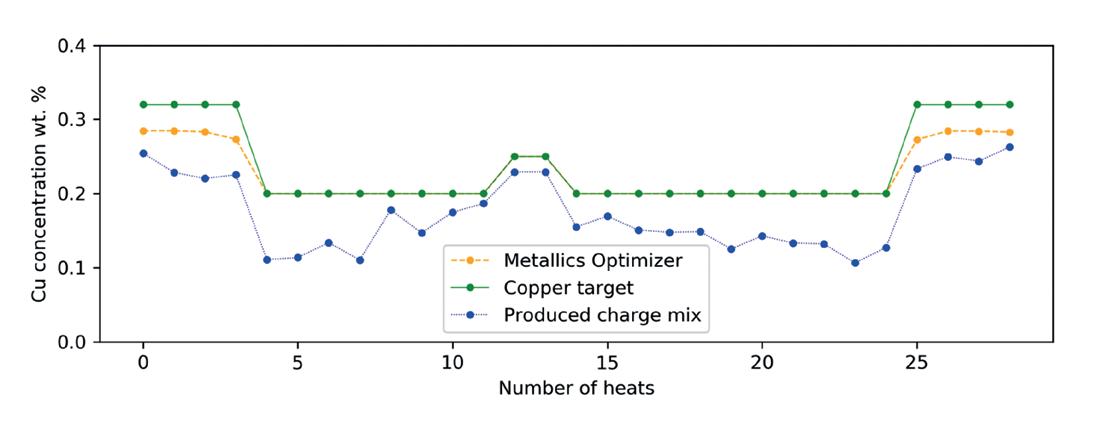
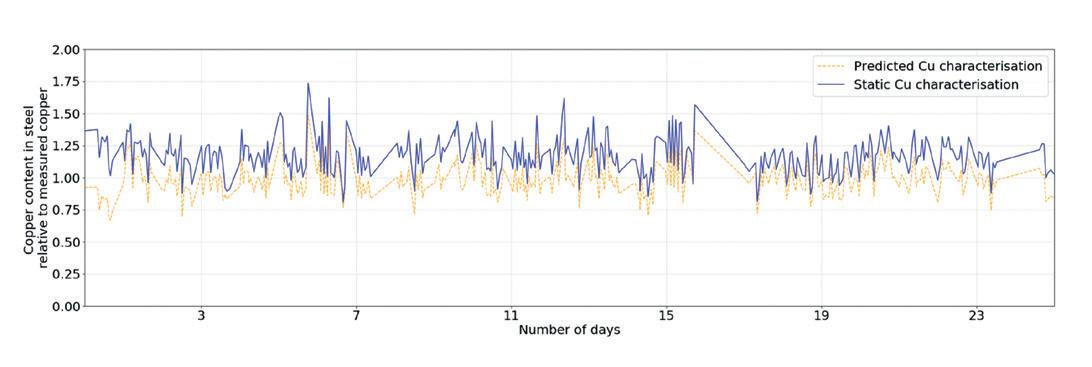
Fig 5 shows copper concentrations in the final product. The solid green line represents the copper target. The dotted blue line represents the charge
mix produced by the customer with the traditional recipe. With some heats, there is a large gap between the green and blue lines. This means that more scrap types with a low copper content are used than necessary. As those scrap types are usually more expensive, there is a potential to save money by using scrap types with a higher copper content, which are usually less expensive. Consequently, the area between the green and blue lines represents potential savings that can be made.
The dashed yellow line represents the charge mix calculated by the CMO. In this case, no safety margin was applied during optimization. With most heats, the copper content of the optimizer is equal to the copper target. This means that the maximum permissible copper content has been attained, which corresponds to the cheapest possible charge mix. The first three heats of the sequence have a copper concentration below the target value. Heats 4 to 5 undergo a transition from a heat with a high copper target to a heat with a low copper target. As the CMO is sequencebased, it takes the copper target for the whole sequence into consideration. It starts with a lower copper concentration in heats 1 to 3 and reduces the copper content in heat 4 already, because a gradual reduction is cheaper than the large step between heats 4 and 5. Depending on the hot heel size, such a large reduction might not even be technically feasible.

In heats 11 to 14, there is a transition zone in which small changes in the copper
concentration occur. These changes (higher or lower) can be achieved in one step. The last five heats see a change of the copper target from a low value to a high value. This transition also takes place in two steps. The highest copper target value is not attained. This may be because the cheapest available scrap types result in a lower copper concentration in the mix than the target.
Conclusions
The Metallics Optimizer calculates the cheapest possible charge mix for the electric arc furnace. It consists of the Materials Identifier, which estimates the element concentrations for every raw material that is charged in the EAF, and the Charge-Mix Optimizer, which minimizes the production costs for a sequence of heats. The Materials Identifier reduces any uncertainty regarding each element’s concentration in the relevant raw materials. This reduced uncertainty is then beneficial for the charge-mix calculation. Raw materials with a higher copper content can be used to a greater extent as a much lower safety margin can be applied. These high copper content raw materials are usually less expensive than those with low copper concentrations. The CMO is sequence-based and, therefore, also accounts for transition zones between heats by considering the hot heel as an input stream to the heat. This ensures that feasible charge mixes are created, which can be used directly in the production process. �

MACHINE LEARNING 40 www.steeltimesint.com September 2023
Fig 5. Copper concentrations in the product for one sequence. The blue line represents the charge mix produced with the traditional recipe for the customer, not the recipe suggested by the Metallics Optimizer
Fig 3. Comparison of copper concentrations
Fig 4. Comparison of static and predicted copper values
Solutions at every step
The steel industry has long been one of the largest producers of carbon emissions. As many European countries and others globally continue to set ambitious goals for decarbonization, per the Paris Agreement, and investors push toward greener ventures, many major players are rethinking their business operations.
By Martin Gray*
AS industry leaders evaluate strategies for achieving decarbonization targets, they should consider intermediary steps that help achieve carbon reduction goals. For steelmakers, one step might include pursuing cross-industry partnerships to effectively use the byproducts of the steelmaking process.
To keep the global temperature from rising more than 1.5°C above pre-industrial temperatures, many highly industrialized countries must reach net zero carbon emissions by 2050. In 2016, 190 nations, including most of Europe, adopted the Paris Agreement to aid in this global effort.
As part of this effort, many countries have set limits for how much carbon they emit each year and have employed various strategies to enforce these policies and reduce carbon emissions. In many of those countries, manufacturers operating within their borders receive shares of carbon credits that determine how much carbon they are allowed to emit. Economic pressure – in the form of carbon taxes, carbon caps and trading systems – is placed on countries throughout Europe and is used to restrict
the total amount of carbon emitted in a country. Carbon caps tend to incentivize an overall decrease in carbon emissions across industries, while trading systems enable companies to sell excess credits to their peers and competitors.
In addition to continuously tightening regulatory pressure, investors and the public are also interested in sustainability and look to manufacturers’ carbon emissions as key factors for evaluating their commitment to sustainable practices.
Emissions and opportunities across industries
Across industries, traditional methods of production are carbon-intensive. Demand for innovative, low-carbon-producing products is increasing compared to demand for high-carbon-producing legacy products. This trend will continue in the race to net zero.
In the energy industry, the highest carbon-producing industry globally, renewable sources are rapidly becoming favoured over gas and oil. Despite the benefits these renewable sources offer, the

energy industry relies on decarbonizing existing fuel sources as part of the clean energy transition. From blue hydrogen to carbon capture initiatives, oil and gas companies are changing their processes to adapt to shifting global priorities.
The asphalt industry is another highcarbon producer. From its mined aggregate and oil-based binders to the high temperatures needed to heat the product to its liquid form for laying, each step of the traditional asphalt roadway-making process emits carbon. In its effort to decarbonize, the industry has analyzed its processes and materials to identify ways of reducing its footprint at every level.
As with other industries, steelmaking can also benefit from adjusting existing processes to stay ahead of strict environmental demands. According to the World Steel Association, steelmaking produces 8% of global carbon dioxide emissions. As a result, the decarbonization of the industry will be critical to achieving net zero by 2050.
Before the steelmaking process even begins, mining for and processing new iron
DECARBONIZATION 41 www.steeltimesint.com September 2023
*Managing director, SteelPhalt at Harsco Environmental
ore requires large amounts of energy and can produce high amounts of carbon. From there, the traditional steelmaking process from start to finish continues to emit carbon into the atmosphere.

In the first step, during which iron ore is turned into liquid iron in blast furnaces, coke, the traditional reducing agent, produces the bulk of the carbon emissions produced during this step, along with the energy needed to produce the heat in the furnaces. In the second step, impurities from the molten iron are separated in a basic oxygen furnace, leaving molten steel and byproducts, like steel slag, and producing additional carbon emissions.
Energy, asphalt and steel alike traditionally create large quantities of carbon emissions. Opportunities for decarbonization are abundant within each industry. Consequently, when efforts are shared across these industries, each can benefit from the others’ decarbonization advancements.
Carbon-reducing solutions

The steel industry has made headway in its pursuit of carbon reduction throughout the entire production process. Modifications in the first two steps of the process can eliminate almost all the carbon emissions associated with steelmaking. However, these processes require major investments in large-scale implementation. Other intermediate process changes and solutions for byproducts may also reduce the carbon footprint on a smaller scale.
Hydrogen has been at the forefront
of research and innovation for its effectiveness in reducing carbon emissions in steelmaking. Its use has the potential to eliminate carbon emissions from the initial steps of steelmaking, specifically replacing the traditionally used coke with hydrogen. The resulting chemical byproduct is water vapour. This process, called direct reduction, swaps the traditional reducing agent for one that does not emit carbon.
with increased upfront costs. While there are still barriers to hydrogen utilization in the steelmaking process, the solution holds promise for reduced emissions and costs.
Another option for decarbonization within steelmaking is closed loop carbon recycling. This method replaces coke by pumping carbon directly into the blast furnace. Carbon dioxide emitted by the furnace is captured, and the molecules are split into their carbon and oxygen components. Carbon is recycled in the blast furnace. For this method to be closed loop, it uses two reaction chambers – one to make carbon and another to produce oxygen. Then, the two chambers switch roles to keep the process moving.
Closed loop carbon recycling increases upfront electricity use but has the potential to lower overall steelmaking costs and reduce up to 90% of carbon emissions. Though promising, the process has limitations, including the need to keep some coke in the process to stabilize it.
Beyond the upfront direct reduction of carbon emissions through replacing carbonintensive coke with more eco-friendly reducing agents, modifications to several intermediary steps of steel production provide opportunities for step-by-step decarbonization.
Incorporating beneficial reuse into the steelmaking process offers several opportunities to reduce carbon emissions. The recovery of previously discarded carbon and iron enables the reuse of millions of tons of material, reducing costs and solid and gaseous emissions. Similarly, reusing byproducts as sinter product feed in the blast furnace reduces the need for mining raw materials. As with reusing recycled steel, reusing byproducts reduces carbon emissions associated with mining new ore, coke and lime.
Despite the overwhelmingly positive outcomes of hydrogen integration in steelmaking, the industry has yet to adopt the process on a large scale. Current hydrogen production levels remain too low for the steel industry to reliably use it as its primary reducing agent. Additionally, adapting equipment for hydrogen comes
Steel slag presents a host of carbonreducing opportunities with its inherent characteristic of being rich in calcium silicates. When carbon dioxide dissolves in water and forms carbonic acid, its reaction with dissolved calcium silicates sequesters the carbon, removing it from the environment.
More than 400Mt of iron and steel slag are produced each year. These byproducts of the steelmaking industry may be waste to some, but innovative companies are using them as an eco-friendly alternative to mined materials to support the asphalt, concrete and agriculture industries.
DECARBONIZATION 42 www.steeltimesint.com September 2023
Carbon-reduction through interindustry byproduct integration in practice

There are a growing number of process adjustments that could help decarbonize steelmaking. The most promising solutions reduce carbon emissions in both the steelmaking process and associated industries through the beneficial reuse of steel byproducts. Inter-industry solutions require strategic partnerships between steelmakers and external industries. These partnerships, already forged across several industries, show encouraging results in reducing carbon emissions for all parties involved.
Because direct reduction methods are expensive and would take extensive time and effort to implement, intermediary decarbonization strategies hold promise for carbon reduction in the steelmaking industry. For example, both steelmakers and other industries can take advantage of the carbon reducing properties of steel slag.
There are several ways these inter-industry partnerships could take shape. In asphalt making, steel slag can replace traditional
mined aggregate. Traditional methods of sourcing this aggregate, which is made of sand and gravel, contribute to carbon emissions. Swapping it for a slag-based product removes the source emissions and sequesters additional carbon.
Steel plants can provide asphalt companies with slag for use in the asphalt mixture.
Additional checks need to be in place to monitor the quality of the incoming product and experience applied to ensure that products are created to best utilize its properties.
Some environmental product companies that specialize in this slag-based asphalt


Safety Storage Efficiency
Enhance the Safety, Capacity and Efficiency of Your Steel Facility
Combilift is the perfect fit for the steel industry. Our range of VNA, multidirectional forklifts, straddle carriers and mobile gantry cranes are perfect for handling long product, allowing you to maximise your storage, efficiency and safety.
The COMBi-GT is simply the obvious choice very narrow aisle stand on forklift when space is at an absolute premium when handling long loads. Platform lengths can be customised to fit your existing narrow aisle facilities.

Contact Us Today
To find out how Combilift can help you unlock every inch of your storage space.


product have tested its durability and usability against traditional asphalt and found this asphalt performs well using steelmaking byproduct as a critical component.
The asphalt industry is an example of how integrating the steelmaking process with production in other industries can lead to cross-industry decarbonization. Steelmakers who introduce cross-industry partnerships to their carbon reduction repertoire may realize the environmental and economic benefits of the business arrangement.
Decarbonizing the steelmaking process is a long and challenging undertaking that is critical to achieving aggressive global sustainability goals. The steelmaking industry is expected to spend $4.4 trillion over the next 30 years to decarbonize its operations. Although an expensive and involved process, decarbonizing the steel industry will yield extensive benefits in the future. Pursuing intermediate steps for decarbonization, like inter-industry partnerships, may help the industry achieve measurable successes along the path to net zero. �
DECARBONIZATION 43 www.steeltimesint.com September 2023
25
STI International 2.0.indd 1 07/09/2023 11:22:01
combilift.com
Flying above the radar
With energy efficiency and sustainability taking centre stage in steel production, OndoSense’s radar technology offers enhanced productivity, and improved cost says Dr. Mathias Klenner* – ‘no magic wand needed!’

1. How are things going at OndoSense? Is the steel industry keeping you busy?
We are currently experiencing a strong growth, particularly in the metal and steel industry. Our radar solutions successfully address several of the current needs in steel production. First and foremost, our radar technology is very robust and thus ideally adapted to the harsh conditions of the steel world: This means that smoke, dust, heat, rough surfaces, or difficult light conditions do not impact the measurement results. Second, the unmatched accuracy and dependability of our radar distance sensors is exactly what the industry needs – e. g. for a precise and safe automation of the steel rolling process. Last, but not least, OndoSense puts the customer first: not only by providing a user-friendly sensor set-up with great configuration options and a fast expert support; but also, via our flexible offering, from off-the-shelf sensors to customized sensor solutions.
2. What is your view on the current state of the global steel industry?
On the one hand, trade disputes, overcapacity and the current geopolitical environment are impacting the steel sector, leading to lower profitability. On the other hand, the steel sector is in a transition phase: It needs to rapidly reduce its CO2 emissions, enhance energy efficiency and make steel ‘greener’ through innovative technologies and increased automation all along the steel lifecycle. This requires smart, long-term investments. Steel companies who don’t adopt and invest in these technologies may have trouble maintaining their productivity and competitiveness. Our radar solutions enable fast and important productivity and efficiency gains with moderate investment costs.
3. In which sector of the steel industry does OndoSense mostly
conduct its business?
Currently, our busiest steel sector is steel, working with a focus on the rolling mill plants.
4. Where in the world are you busiest at present?
Our customer base in the steel industry consists of large multinationals as well as national players and SMBs. To date, our focus is still on the European continent, but with a growing worldwide customer base, particularly in the USA.
weight, cost, or material strength, to name the most basic ones. These characteristics can make either steel or aluminium the material of choice: it just depends on the demands of the application. What I can also say is that our radar sensor will measure both aluminium and steel with equal accuracy and dependability. In contrast technologies such as laser or x-ray, the measurement result of our radar is not affected by rough or shiny surfaces as well as colours. Furthermore, you do not need to recalibrate the measurement set-up when using a different steel alloy or metal.
7. What are your views on Industry 4.0 and steelmaking and how, if at all, is OndoSense using it?
There is a lot to say here, so let me focus on one example: As a specialist for not only radar hardware but also radar software and signal processing, OndoSense is integrating AI radar algorithms to improve the precision and robustness of the radar signals. This enables our customer in the steel industry to benefit from sub-millimetre accuracy even in the difficult conditions of the rolling mill or the continuous casting plant.
8. Hydrogen steelmaking appears to be the next big thing. What’s your view?
5. Can you discuss any major steel contracts you are currently working on?
As you may have read in the specialized press, we are successfully supporting ArcelorMittal in the accurate dimension measurement of semi-finished steel with our radar sensor solutions.
6. Where does OndoSense stand on the aluminium versus steel argument?
I will simply say that both materials have very distinctive features – e. g. in terms of
Hydrogen is a very promising technology with regard to decarbonizing the steel industry, especially when it is produced with renewable energy. However, the EU has recently calculated that to decarbonize, for instance, German steel production, it would be necessary to increase electricity generation by 20% to produce enough hydrogen1. This is a good indicator of the amount of investment needed for this transition. In the meantime, intermediate solutions and additional technologies are needed to lower the CO2 footprint and increase energy efficiency. Such as, for example, with radar sensor solutions.
PERSPECTIVES Q&A: OndoSense 44 www.steeltimesint.com September 2023
*Co-founder and CEO, OndoSense
Matthias Klenner
9. In your dealings with steel producers, are you finding that they are looking to companies like OndoSense to offer them solutions in terms of energy efficiency and sustainability? If so, what can you offer them?
Our experience is that steel producers are looking for sustainable solutions that enable a safe and efficient automation of critical production processes. And with OndoSense radar solutions, customers get reliable and accurate measurement data even when measuring 1300°C hot steel. This enables greatly enhanced productivity and energyefficiency: no more unplanned downtime, costly repairs, or discarding of products with faulty dimensions.
10. Where does OndoSense lead the field in terms of steel production technology?
We are experiencing a strong demand regarding our solution for the dimension measurement of semi-finished steel in the rolling mill, which comes with unique added values in terms of accuracy, dependability, low maintenance as well as safety.
OndoSense also offers innovative solutions for the level measurement of
liquid metal, the positioning of deslagging machines or the steel strip positioning in the coating line, to name but a few.

11. How do you view OndoSense’s development over the short-tomedium term in relation to the global steel industry?
The steel sector definitely is an important industry for OndoSense. Our intention is to expand our role as a reliable automation partner of the global steel industry.
12. What exhibitions and conferences will OndoSense be attending over the next six months?

We have been at the Metec 2023 in Düsseldorf and will be attending the EMO Hannover 2023, an important fair for metalworking technology manufacturers. Other conferences and exhibitions are planned for 2024.
13. OndoSense is headquartered in Germany – what’s happening steelwise in the country?
The geopolitical situation and the increased energy prices have had an even greater impact in Germany than worldwide, leading to profitability issues. Steel companies are therefore looking for solutions to enhance
the productivity and efficiency of their plants with a fast return on investment. We believe that our radar solution can be a smart way of quickly lowering costs and producing steel more efficiently while keeping investments low. As elsewhere in Europe and in the world, Germany is subsidizing companies such as Salzgitter or Thyssenkrupp to facilitate the transition to green steel2
14. Apart from strong coffee, what keeps you awake at night?
Well, I love good coffee almost as much as I love my son. He is two years old and does a very good job of keeping me awake at night from time to time – no coffee needed !
15. If you possessed a superpower, how would you use it to improve the global steel industry?
If I had a magic wand, I would of course instantly reduce the CO2 emissions to net zero. In the meantime, our radar technology contributes to enhancing the productivity and energy-efficiency of producing steel, with moderate costs. No magic wand here, just great engineering and putting the needs of the customer first
1. European Parliamantary Research Service: The potential of hydrogen for decarbonising steel production, December 2020, chapter 4: https://www.europarl.europa.eu/RegData/etudes/BRIE/2020/641552/EPRS_BRI(2020)641552_EN.pdf
2. The Economist: How fast can European steelmakers decarbonize, 11 May 2023 https://www.economist.com/business/2023/05/11/how-fast-can-european-steelmakers-decarbonise

www.steeltimesint.com September 2023 PERSPECTIVES Q&A: OndoSense 45
! �


























Temperature Profiling Solutions In the Steel Reheat Industry Comprehensive • Passes through furnace with Slab • Get an accurate Slab temperature profile • Measurement at up to 20 points • Live 2 way radio communications Safe • Safe system installation without production delays • Reliable protection of data logger up to 1300°C Easy • Optimise your process accurately • Validate your furnace mathematical model. PhoenixTM GmbH Germany info@phoenixtm.de PhoenixTM Ltd UK sales@phoenixtm.com PhoenixTM LLC USA info@phoenixtm.com Benefits • Optimise furnace programs • Save energy and increase production • Obtain optimal drop out temperatures • Minimise scale build up • Prevent hot roller wear & tear Where experience counts ! www.phoenixtm.com Since 1866 Contact us today subscriptions@quartzltd.com to take advantage of our special subscription packages PRINT + DIGITAL SUBSCRIPTION 8 print copies and a printed copy of the Steel Times International Directory Digital copy of the magazine delivered to your inbox every month A digital version of our annual Steel Times International Directory Access to our digital archive of past issues and webinars Weekly Steel Times International newsletter PLUS access to all digital issues of Furnaces International Steel Times International is a leading publication serving the global steel industry and offering its readers a strong focus on all aspects of the production process embracing both basic oxygen and electric steelmaking. DIGITAL ONLY SUBSCRIPTION With a digital subscription you will receive all the benefits of the Print + Digital option, excluding print copies! Choose your subscription package... | WWW.STEELTIMESINT.COM STI-Subs-Half-page-Ad-Print.indd 1 01/08/2023 15:42
Cort and the black metallurgists. Part 1 – Setting the scene
Several recent news articles have jumped on the assertation, without challenge, that Henry Cort, who history recognizes as the inventor of the Puddling process to produce wrought iron, ‘stole’ the process from enslaved Africans working at a foundry in Jamaica. By Tim Smith*
THE article ‘Black metallurgists and the making of the industrial revolution’ by Dr Jenny Bulstrode of the Department of Science and Technology Studies, University College London, is published on-line in the journal ‘History and Technology’ and is available to download at https://doi.org/10. 1080/07341512.2023.2220991
The paper focuses on the enslavement of African people, in particular from West and Central Africa, who were transported to Jamaica to work in the sugar plantations. It argues that some of these enslaved people were skilled African metalworking artisans, and these were put to work in an ironworks set up in 1770 just west of Morant Bay, Jamaica.
The expertise of African metallurgists was well recognized with their knowledge including the casting of bronze, such as the Benin bronze plaques, and the smelting of iron in bloomery furnaces, skills practiced from at least the 16th century. Bloomery iron is produced in the solid state and has a variable carbon content typically ranging from 1% to 0.1%. Skilled smiths can recognise the change in properties of
different sections of the bloom and can either select these for differing applications or homogenise the bloom by repeated heating and forging.

The Morant Bay foundry was established by English coppersmith, John Reeder, with the financial support of plantation and slave owner, William Baillie. It was established with the expressed aim of producing equipment for the sugar industry and to serve Port Royal which was a base for the British Royal Navy and merchant shipping. Such local manufacturing was, at that time, in contravention to Britain’s colonial policy of supplying manufactured goods to the colonies from Britain.
The author states that Reeder had no prior knowledge of building a foundry so recruited 60 white artisans, presumably to build and equip the works, and for the instruction of a local enslaved workforce of 76. The works, consisting of three buildings, contained six hearths, a water wheel, at least two reverberatory furnaces (air furnaces) and rolling mills. Within a few years, all but two of the white workers had gone. The forge operated for 12 years

*Consulting Editor STI
during which time it prospered, recovering scrap iron and forging it to bar by creating faggots of scrap, heating these to white welding heat, and rolling them through a mill with grooved rolls. Reeder also cast guns and mined local iron ore. An excavation of the site in 1989-93(1) located smelting slags but does not identify if they were blast furnace slags or bloomery slags. A blast furnace is more probable as excavations revealed leats were dug to bring water to the site to drive water wheels, one being necessary to power bellows or cylinders to provide the air blast to a furnace. A blast furnace would serve the need for a quantity of molten metal to cast guns. However, an alternative explanation would be a bloomery furnace producing solid iron, the latter being familiar to African metalworkers. The iron could then be melted in an air furnace or cupola to cast objects. The excavation did find evidence of other metalworking activities including the production of brass.

The works averaged a profit of £4,000 a year – equivalent to about £7.4M today. The forge also produced iron for ship repair,

www.steeltimesint.com September 2023 HISTORY
47
Possibly the only remaining puddling furnace. This one is located at the Ironbridge Gorge Museum, England
and benefited from scrap liberated on the breaking of derelict vessels and also likely pig iron brought in as ships ballast, known as ‘Voyage Iron’.

The forge was dismantled in 1782 by order of the Lieutenant Governor of Jamaica under the threat of a French and Spanish invasion which could take advantage of the foundry at a time when Britain was at war with France who were supporting the American War of Independence (17751783). More likely, however, was the fear of the foundry being seized by insurgent Jamaican slaves, a group of 48 of whom had formed a settlement under the leadership of a man known as ‘Three Finger Jack’ in 1780.
Following the dismantling of Reeder’s foundry, some of the equipment was destroyed but various parts were loaded onto a ship bound for England, captained by a John Cort, a cousin of Henry Cort. Although bound for Lancaster, bad weather caused the ship to alter course for
Portsmouth, close to where Henry Cort had set up a works to supply wrought iron to the Admiralty from scrap iron supplied by them. According to the author, Henry Cort was in financial difficulties and unable to fulfil the contract.
The author contends that the fortuitous arrival of the John’s ship from Jamaica enabled Henry Cort to procure this equipment and the knowledge of its
Optimization
ACCUCROP ACCUSPEED

Best head and tail imaging (ACCUBAND) “+”

Best transfer bar tracking (ACCUSPEED) “+”
Best crop shear control (ACCUCROP) “=”

Best overall crop shearing accuracy
Very quick return on investment (ROI)
Scan for details or reach out directly +1-416-445-5850 | kelk.sales@vpgsensors.com



operation and so acquire the means to puddle iron.
Two key elements are the basis of Cort’s process: The use of an air draft reverberatory furnace and the application of grooved rolls to produce bar, rather than forging this by hammer. Part 2 of this article will show that these technological developments were already in action before Reeder set up his foundry. �




The Furnaces International Buyers’ Guide is the essential guide to furnace manufacturers and suppliers of furnace equipment and services to the industrial heating/process industry.

HISTORY 48 www.steeltimesint.com September 2023
A puddling mill showing the sequence of groove sizes to roll bar (Ironbridge Gorge Museum)
Footnote
kelk.com
1 African metallurgy in the Atlantic world Candice L Goucher The African Archaeological Review, 11 (1993), pp. 197-215. © 1993 Cambridge University Press
© 2022 VPG - All Rights Reserved 12973-EN_May22
THE INTERNATIONAL
INDUSTRY
ACCUBAND Crop
System + + ACCUBAND
CONNECTING
FURNACES
Guide
Furnaces International Buyers’
FURNACES INTERNATIONAL BUYERS’ GUIDE 2023 FURNACES-INTERNATIONAL.COM @Furnaces_Int FOR MORE INFORMATION ON ADVERTISING OR HOW TO BE LISTED CONTACT: ESME HORN esmehorn@quartzltd.com | +44 (0) 1737 855 136 Furnaces_Directory_HalfPageAd_PRINT.indd 2 16/01/2023 10:36
We understand how it is important to efficiently extract and process precious metals and minerals.

PROCESS + PROTECT
You save valuable resources while keeping your employees and the environment safe.



Liquiline CM44 and CPS11E: Versatile transmitter and Memosens pH sensors ensure reliable measurement and safe calibration in the lab.

FieldPort SWA50: Intelligent Bluetooth or WirelessHART adapter for the easy connection of all HART field devices to the Netilion Cloud via Edge Devices.
Do you want to learn more? www.de.endress.com/primaries-metal
Cerabar PMC71B: Absolute and gauge pressure transmitter combining measurement accuracy with IIoT functionalities.



Improve your processes with our comprehensive portfolio of measuring instruments, solutions and services:
#itsmorethanjustamachine
UNIQUE
3-ROLL TECHNOLOGY FOR SBQ SIZING. A Reducing & Sizing Block for long products keeping its promises. Achieve your goals with KOCKS RSB®.




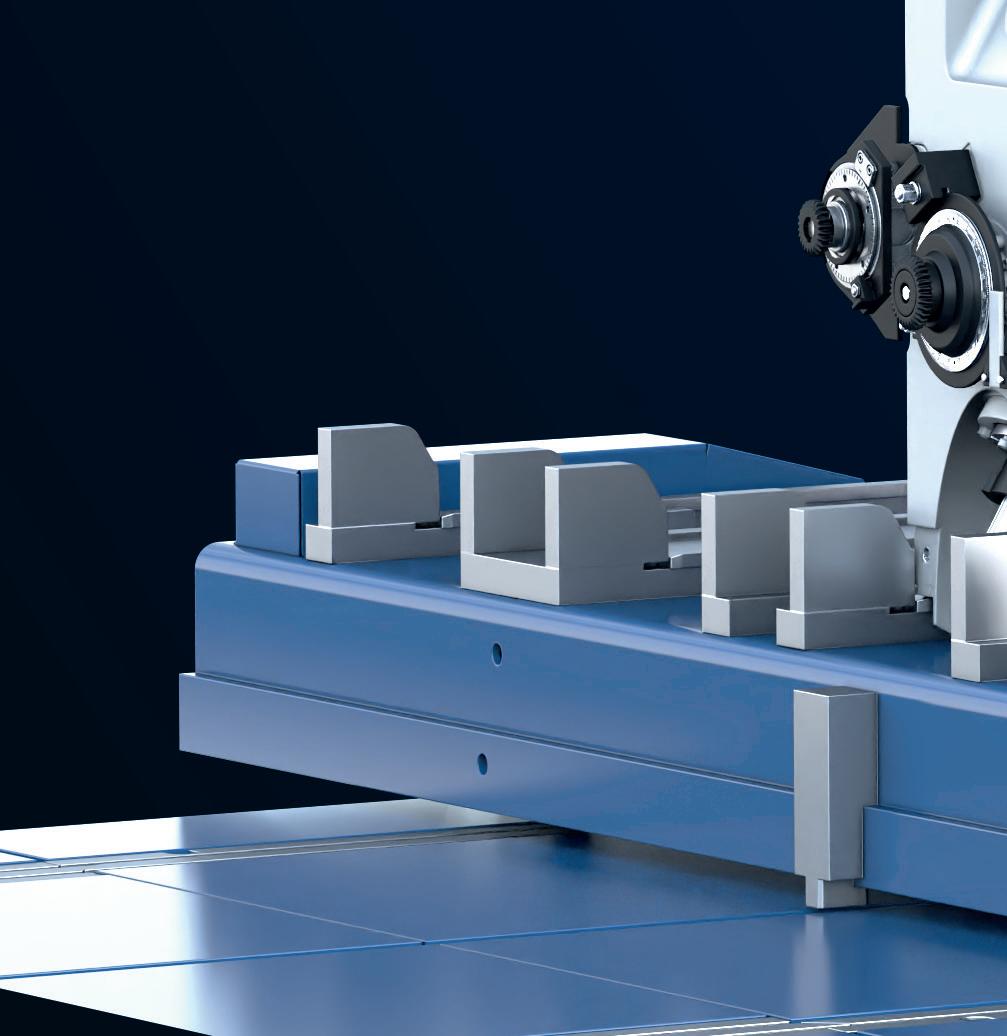





up to 160mm
finishing size in round or hexagonal dimensions

up to 20%



increase in production
up to 10% energy savings in the mill line













WE MAKE YOUR PRODUCT GOLD www.kocks.de















































































































































 By Manik Mehta*
By Manik Mehta*




















































































































































































































































